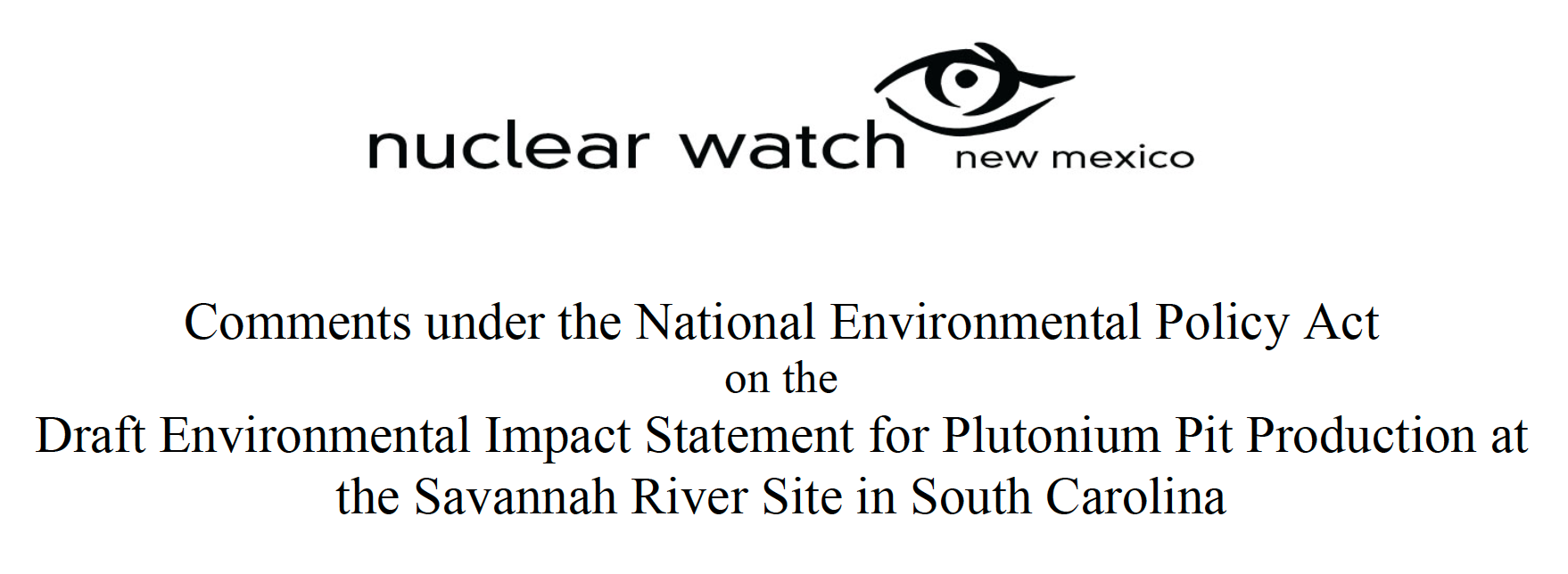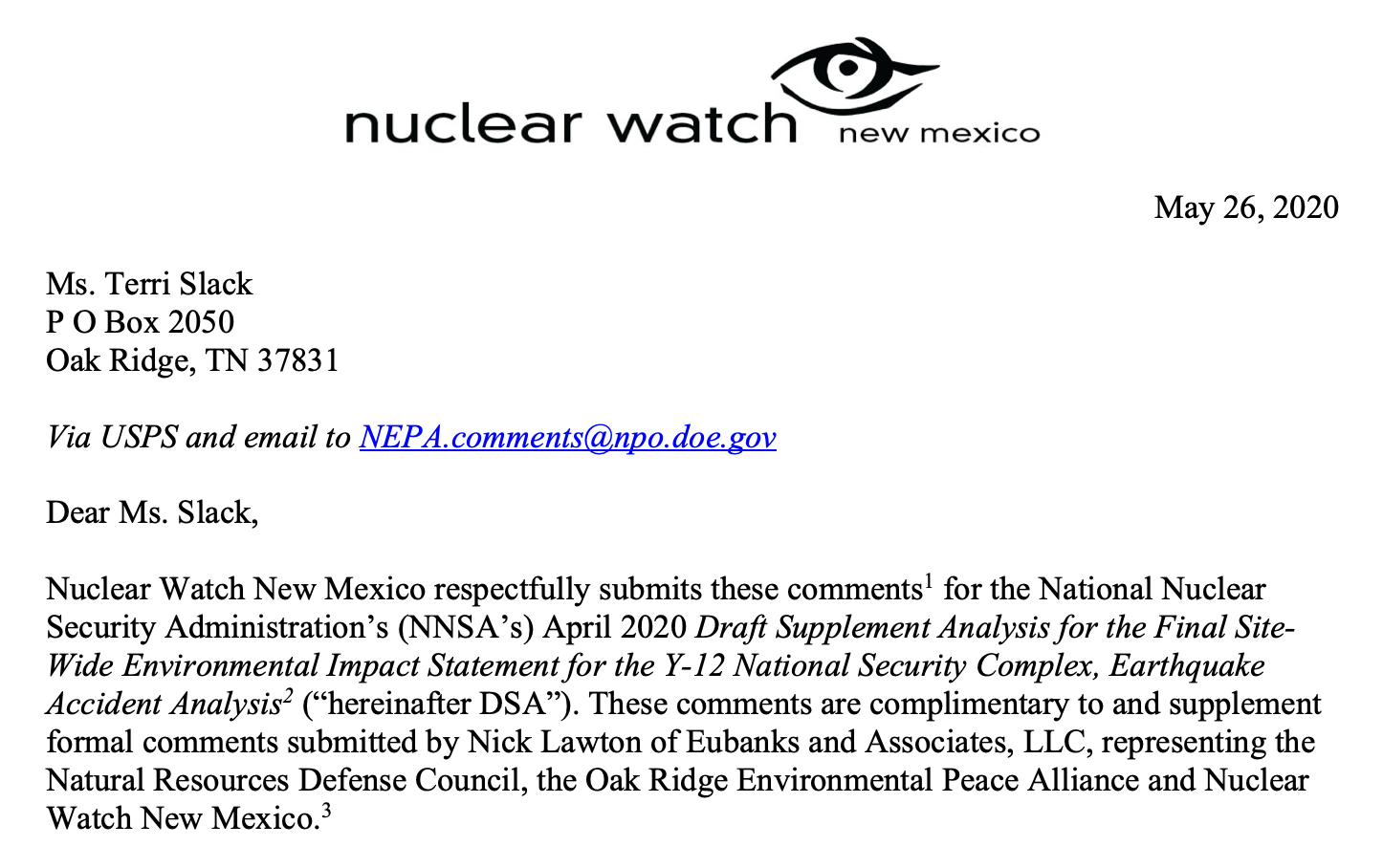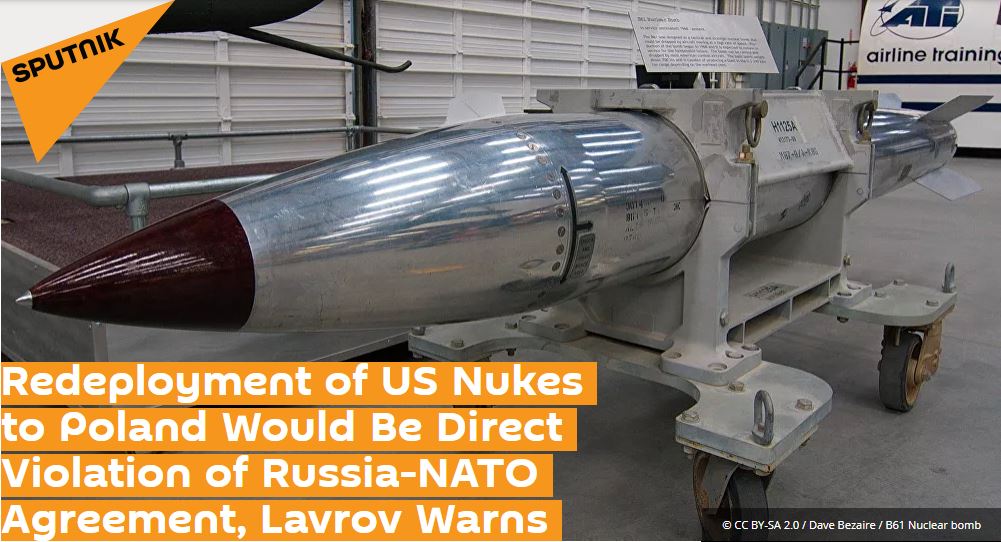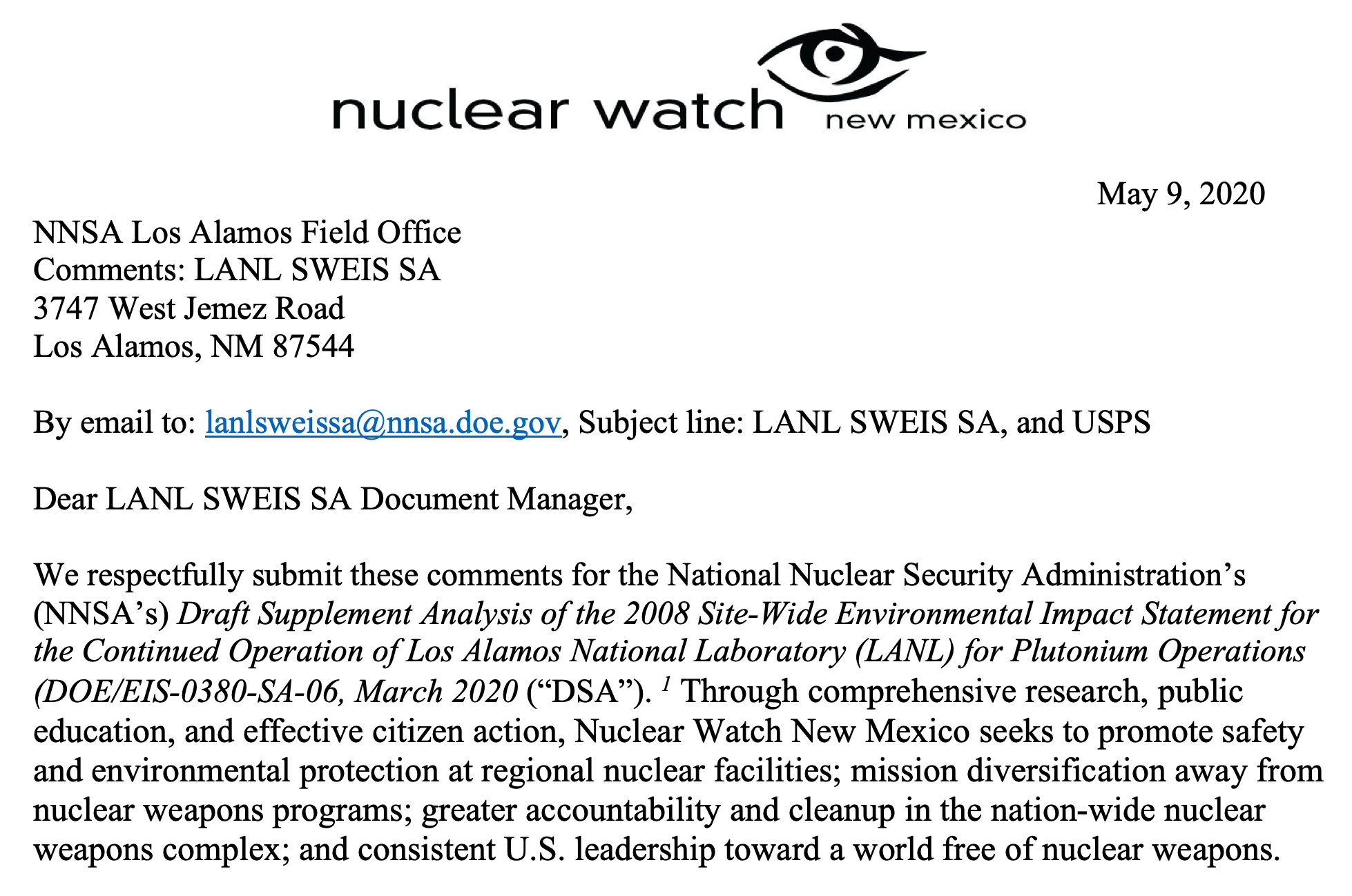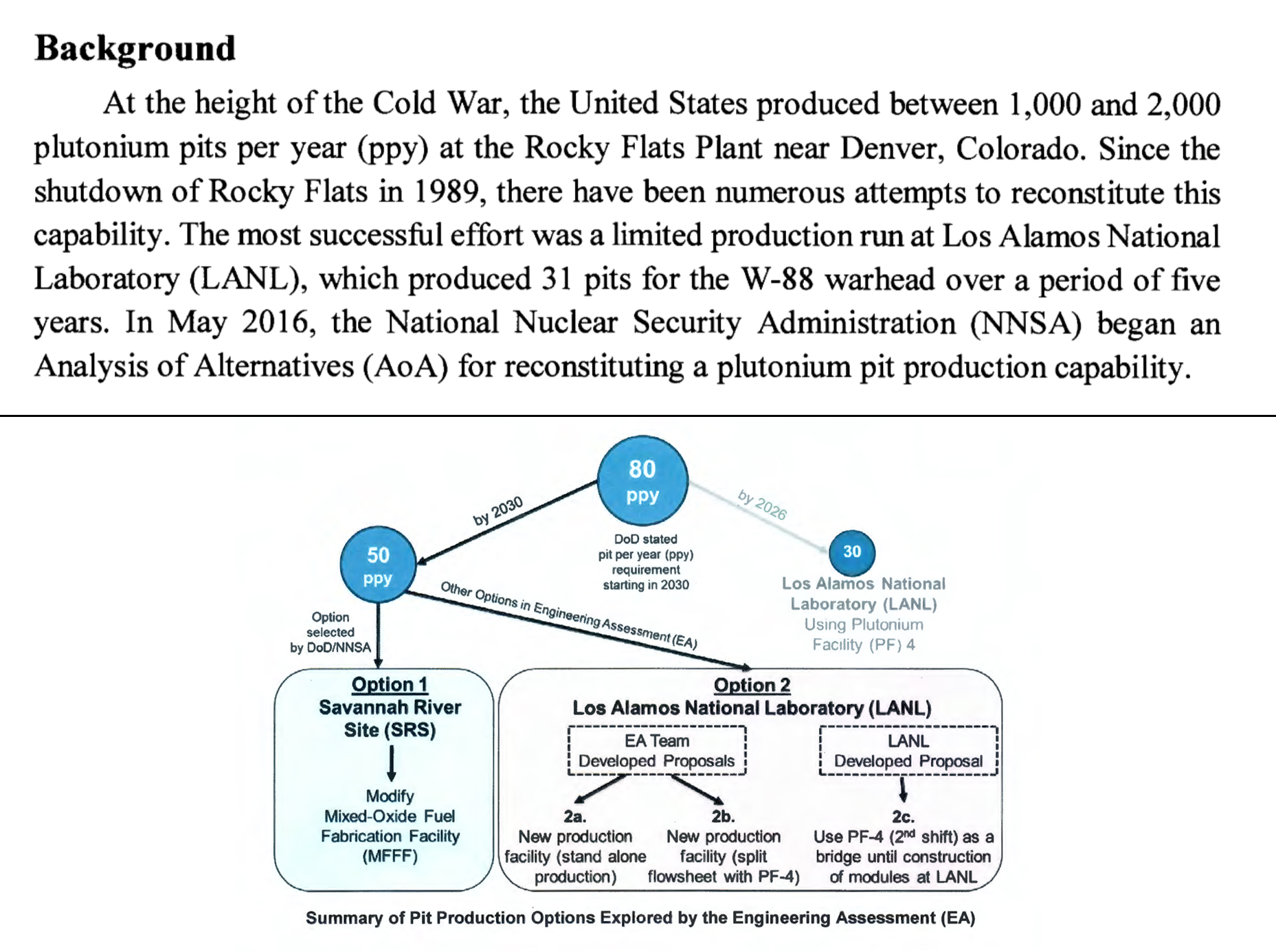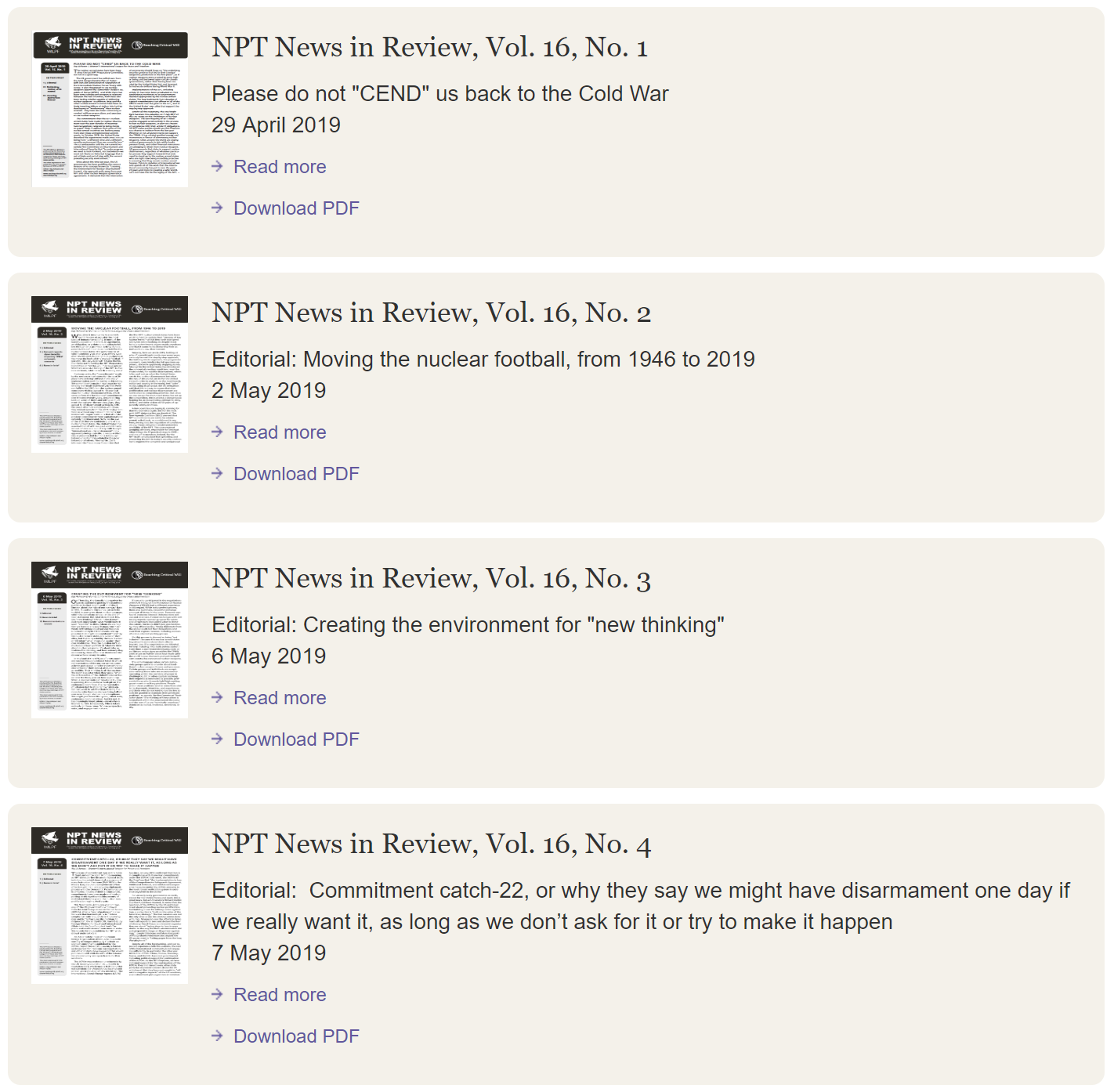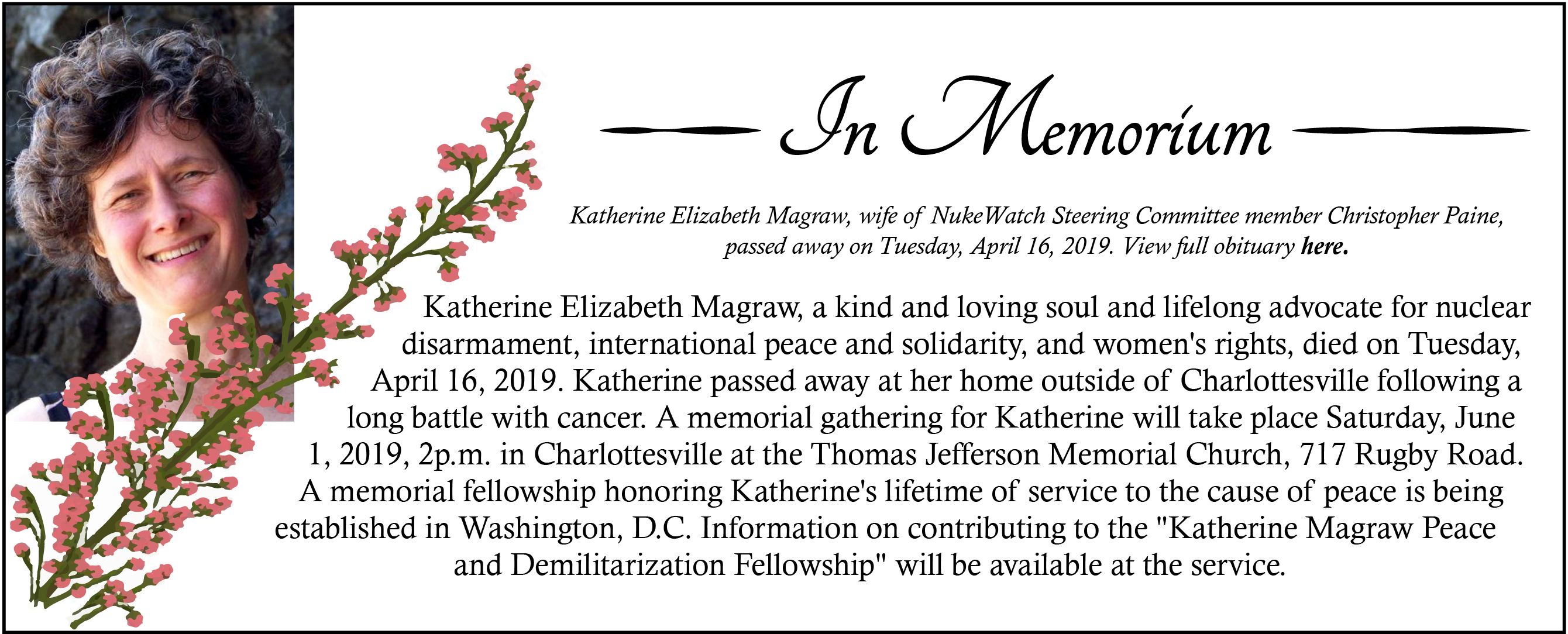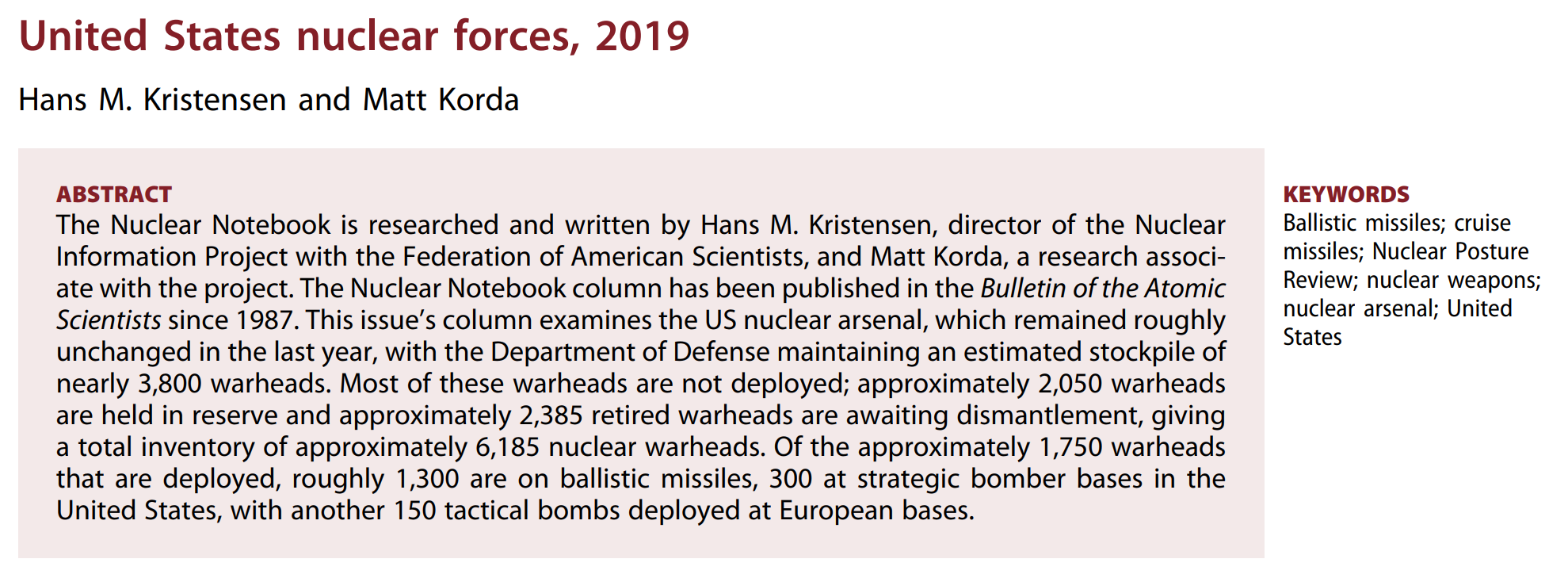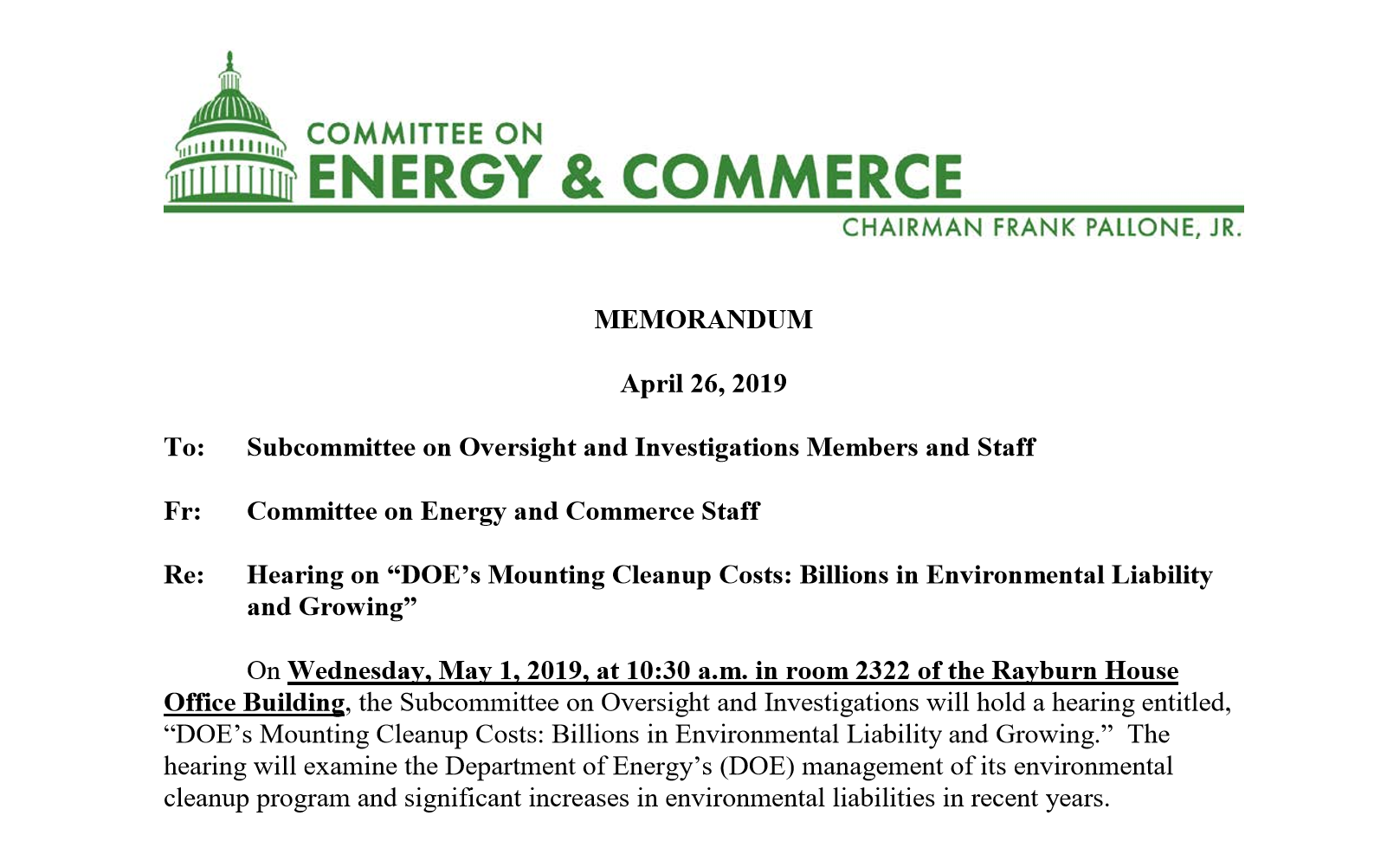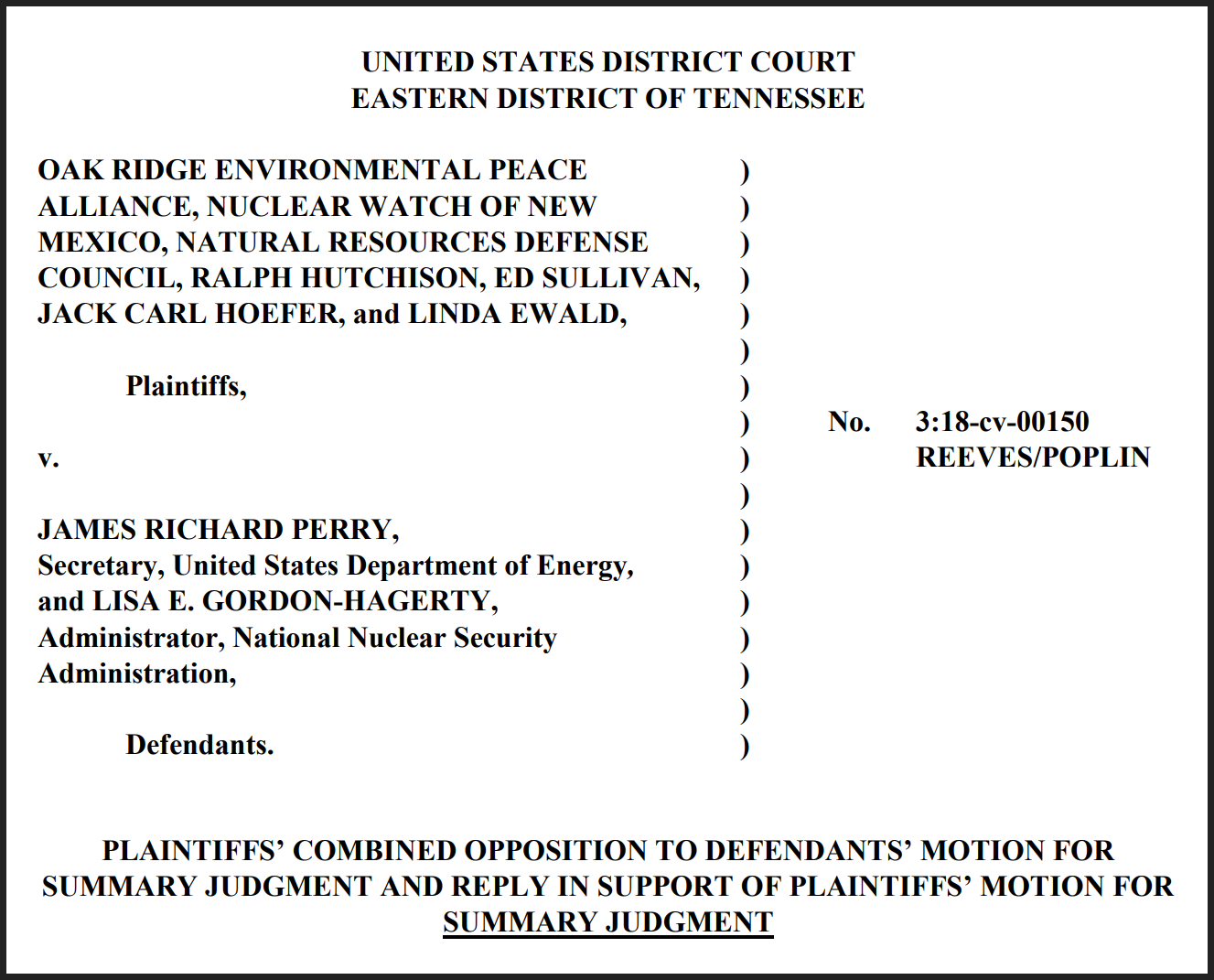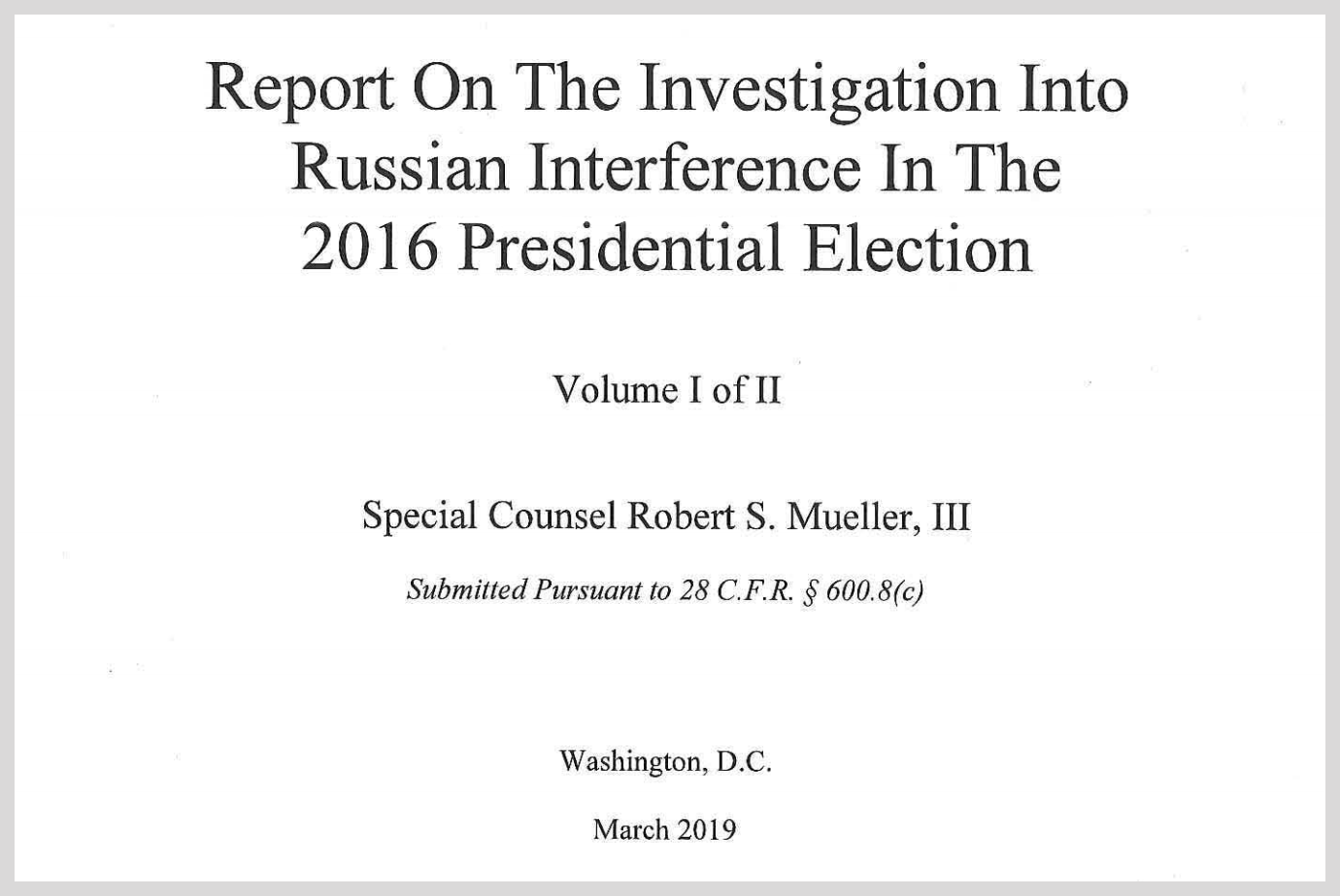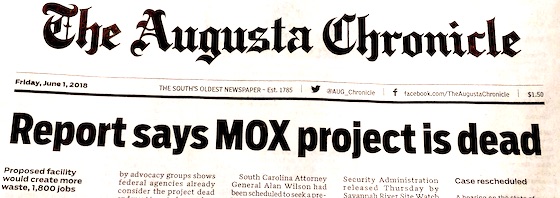Nuclear News Archives – 2020
Trump Envoy to Begin Nuclear Talks with Russia as Key Treaty Hangs in the Balance
The last major treaty limiting U.S. and Russian nuclear might hangs in the balance as the Trump administration pushes to replace it with a long-shot arms-control pact that also includes China five months before the U.S. presidential election.
By Paul Sonne & Robyn Dixon | washingtonpost.com
Russia has said it is willing to extend New START unconditionally. But the Trump administration has balked, saying the treaty signed by President Barack Obama in 2010 is outdated, insufficient and overly advantageous for Moscow.
In addition to wanting a broader pact that covers China, the Trump administration is seeking better verification mechanisms and limits on all Russian nuclear weapons, many of which are particularly risky and fall outside the parameters of New START.
Russia Will Open Nuclear Disarmament Talks With US
But Moscow warns against insisting on including China in New Start negotiations
BY: ADRIAN HEDDEN | currentargus.com
Russia has confirmed that it will open talks with the US this month on extending a major nuclear disarmament treaty but warned that Washington’s insistence on including China could scuttle efforts.
The deputy foreign minister Sergei Ryabkov will meet the US envoy Marshall Billingslea in Vienna on 22 June to begin negotiations on New Start, which expires in February.
Donald Trump has withdrawn from a number of international agreements but voiced a general interest in preserving New Start, which obliged the US and Russia to halve their inventories of strategic nuclear missile launchers.
Iran continues its nuclear work, but is it weapons grade?
In the next few days, the latest quarterly report on Iran’s nuclear program by the International Atomic Energy Agency (IAEA) is expected to become public. It will make headlines even if it doesn’t contain any news.
BY: SIMON HENDERSON | thehill.com
A mega-row is emerging between the United States and its major European allies — Britain, Germany and France — over Washington’s decision to stop issuing waivers so that foreign companies can help Iran’s civil nuclear activities. In a joint statement on Saturday, the three European countries said: “We deeply regret the U.S. decision.”
BEYOND NUCLEAR FILES FEDERAL LAWSUIT CHALLENGING HIGH-LEVEL RADIOACTIVE WASTE DUMP FOR ENTIRE INVENTORY OF U.S. “SPENT” REACTOR FUEL
Petitioner charges the Nuclear Regulatory Commission knowingly violated U.S. Nuclear Waste Policy Act and up-ended settled law prohibiting transfer of ownership of spent fuel to the federal government until a permanent underground repository is ready to receive it.
[WASHINGTON, DC – June 4, 2020] Today the non-profit organization Beyond Nuclear filed an appeal with the U.S. Court of Appeals for the District of Columbia Circuit requesting review of an April 23, 2020 order and an October 29, 2018 order by the U.S. Nuclear Regulatory Commission (NRC), rejecting challenges to Holtec International/Eddy-Lea Energy Alliance’s application to build a massive “consolidated interim storage facility” (CISF) for nuclear waste in southeastern New Mexico. Holtec proposes to store as much as 173,000 metric tons of highly radioactive irradiated or “spent” nuclear fuel – more than twice the amount of spent fuel currently stored at U.S. nuclear power reactors – in shallowly buried containers on the site.
‘Forever deadly’: State officials, communities scramble to fight a proposal to house high-level nuclear waste in New Mexico
New Mexico could become home to nuclear waste generated at nearly 90 nuclear power plants across the country.
ARTICLE BY: KENDRA CHAMBERLAIN | nmpoliticalreport.com
Rose Gardner is not giving up.
A Eunice resident, Gardner has spent the past few years fighting a proposal to store high-level nuclear waste in southeastern New Mexico.
“I was born here in Eunice, New Mexico, and have lived through a lot of ups and downs, oil booms and busts,” Gardner told NM Political Report. “But never have I ever felt that we needed an industry as dangerous as storing high-level nuclear waste right here.”
Gardner, who co-founded the Alliance for Environmental Strategies, is part of a groundswell of opposition to a project currently under consideration by the federal Nuclear Regulatory Commission (NRC) that would see the world’s largest nuclear waste storage facility be built along the Lea-Eddy county line.
Holtec International, a private company specializing in spent nuclear fuel storage and management, applied for a license from the NRC in 2017 to construct and operate the facility in southeastern New Mexico that would hold waste generated at nuclear utilities around the country temporarily until a permanent, federally-managed repository is established. The license application is making steady progress in the NRC’s process, despite the pandemic.
How Much Did the U.S. Spend on Nuclear Weapons in 2019?
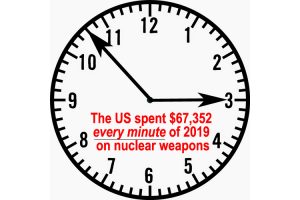 According to a new report by the Nobel Prize-winning International Campaign to Abolish Nuclear Weapons, or ICAN, the U.S. spent $35.4 billion on nuclear weapons in 2019. This figure includes $11.1 billion to the National Nuclear Security Administration, a semi-autonomous agency within the Department of Energy, and $24.3 billion to the Department of Defense. That amount equals spending $67,352 every minute of 2019 on nuclear weapons. In this time of the global COVID-19 pandemic, some question whether these taxpayers’ dollars could fund the needed masks, gloves, personal protective equipment and other equipment for medical professionals and patients, as well as for essential workers across the country. https://www.icanw.org/global_nuclear_weapons_spending_2020
According to a new report by the Nobel Prize-winning International Campaign to Abolish Nuclear Weapons, or ICAN, the U.S. spent $35.4 billion on nuclear weapons in 2019. This figure includes $11.1 billion to the National Nuclear Security Administration, a semi-autonomous agency within the Department of Energy, and $24.3 billion to the Department of Defense. That amount equals spending $67,352 every minute of 2019 on nuclear weapons. In this time of the global COVID-19 pandemic, some question whether these taxpayers’ dollars could fund the needed masks, gloves, personal protective equipment and other equipment for medical professionals and patients, as well as for essential workers across the country. https://www.icanw.org/global_nuclear_weapons_spending_2020
As Alicia Sanders-Zakre, former Nuclear Watch New Mexico intern and current Policy and Research Coordinator for the International Campaign for the Abolition of Nuclear Weapons (ICAN), who is the primary author of the report, Enough is Enough: 2019 Global Nuclear Weapons Spending, said in this week’s Update:
“The billions spent on nuclear weapons in 2019 didn’t save lives – it was a waste of resources needed to address real security challenges, including pandemics and climate change.”
The report, entitled, “Enough is Enough: 2019 Global Nuclear Weapons Spending,” carefully reviewed the nuclear weapons budgets of nine nuclear-armed countries.
Trump Boosts Nuclear Weapons Spending, Fueling a New Arms Race
The United States sharply increased nuclear expenditures over the previous year, from $29.6 billion to $35.4 billion.
ARTICLE BY: JOHN LETMAN | trouthout.org
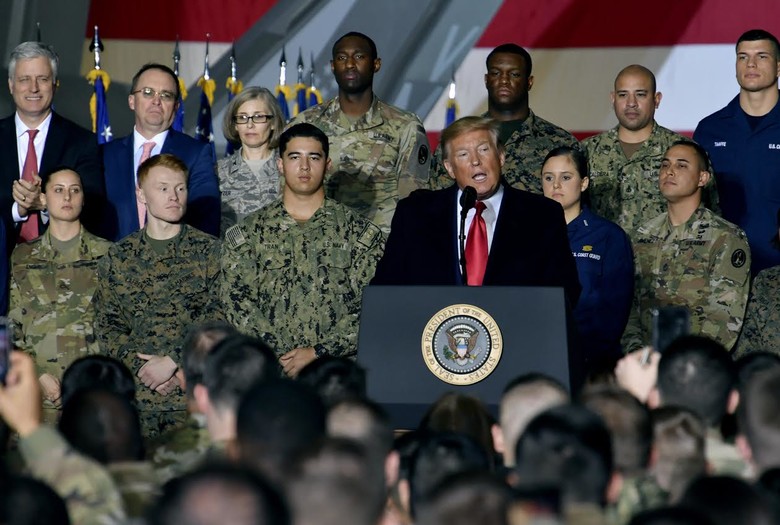
Copyright: Public Domain
Spending by the world’s nine nuclear nations climbed to nearly $73 billion in 2019, nearly half of it by the United States alone. At the same time, the Trump administration has prioritized nuclear weapons in its defense budget while abandoning nuclear treaties, fumbling negotiations and confounding allies.
The administration’s lack of coherent goals, strategies or polices have increased nuclear dangers, leaving the U.S. “blundering toward nuclear chaos with potentially disastrous consequences.” Those are the findings of two separate reports published in May that examine nuclear spending and strategy under Trump.
The findings of the reports lay bare the soaring costs and dangers of the Trump administration’s pursuit of more nuclear pits; the fast tracking of a new generation of intercontinental ballistic missiles; and the deployment of new, low-yield submarine-launched nuclear weapons. In May, The Washington Post reported that Trump officials are in ongoing discussions about resuming explosive nuclear weapons testing.
American Nuclear Policy Initiative — Blundering Toward Nuclear Chaos: The Trump Administration After 3 Years
The nuclear dangers facing the United States, its allies, and the world are increasing.
Three years after entering office, the Trump administration lacks a coherent set of goals, a strategy to achieve them, or the personnel or effective policy process to address the most complex set of nuclear risks in U.S. history. Put simply, the current U.S. administration is blundering toward nuclear chaos with potentially disastrous consequences.
In May 2020, the American Nuclear Policy Initiative (ANPI), a task force of former government and non-governmental experts, released an objective analysis of U.S. nuclear policy under Donald Trump. “Blundering Toward Nuclear Chaos: The Trump Administration after Three Years” finds that all of the nuclear challenges facing the United States – some inherited by the president and others of his own creation – have worsened over the last three years, putting national and global security at greater risk of nuclear use.
Citizen Scientist: Frank von Hippel’s Adventures in Nuclear Arms Control
For 50 years, Frank von Hippel has been working as a citizen-scientist to reduce the grave dangers to humankind from nuclear-weapon and nuclear-energy programs around the world. In this special collection of edited, illustrated and footnoted interviews, von Hippel describes in vivid personal detail the many policy battles he has taken on, the state of nuclear dangers today, and his hopes for a path forward.
Interviews by Tomoko Kurokawa | Journal for Peace and Nuclear Disarmament
Born into an illustrious scientific family that included his grandfather, Nobel laureate James Franck, a leader of the opposition within the Manhattan Project to the use of nuclear weapons against Japan, von Hippel got his PhD in physics from Oxford as a Rhodes Scholar. He was inspired by student activists opposed to the Vietnam War to move from teaching physics at Stanford into a career of policy activism based in Princeton University, where he co-founded the Program on Science and Global Security a leading international center for nuclear arms control, nonproliferation and disarmament research. During the 1980s, von Hippel joined the US citizens’ uprising to “freeze” the nuclear arms race.
NEWS FROM BEYOND NUCLEAR
BEYOND NUCLEAR FILES FEDERAL LAWSUIT CHALLENGING HIGH-LEVEL RADIOACTIVE WASTE DUMP FOR ENTIRE INVENTORY OF U.S. “SPENT” REACTOR FUEL
Petitioner charges the Nuclear Regulatory Commission knowingly violated U.S. Nuclear Waste Policy Act and up-ended settled law prohibiting transfer of ownership of spent fuel to the federal government until a permanent underground repository is ready to receive it
[WASHINGTON, DC – June 4, 2020] Today the non-profit organization Beyond Nuclear filed an appeal with the U.S. Court of Appeals for the District of Columbia Circuit requesting review of an April 23, 2020 order and an October 29, 2018 order by the U.S. Nuclear Regulatory Commission (NRC), rejecting challenges to Holtec International/Eddy-Lea Energy Alliance’s application to build a massive “consolidated interim storage facility” (CISF) for nuclear waste in southeastern New Mexico. Holtec proposes to store as much as 173,000 metric tons of highly radioactive irradiated or “spent” nuclear fuel – more than twice the amount of spent fuel currently stored at U.S. nuclear power reactors – in shallowly buried containers on the site.
Proposed Plutonim Bomb Plant at SRS in South Carolina Draws Criticism from Public; NNSA’s Nuclear War Plans Challenged
DOE’s NNSA Quietly Plans for All-Out Nuclear War as Coronavirus Rages and Peace and Justice Demonstrations Grow; Plutonium Pit Production to Stimulate Arms Race
SAVANNAH RIVER SITE WATCH | einpresswire.com

COLUMBIA, SOUTH CAROLINA, US, June 3, 2020 — Numerous public interest groups and individuals have submitted comments critical of the U.S. Department of Energy’s unjustified proposal to expand production of plutonium “pits” – the core of nuclear weapons – to DOE’s Savannah River Site near Aiken, South Carolina. A flurry of comments were submitted on the proposed SRS Plutonium Bomb Plant (PBP) as the comment period ended on June 2.
Comments were formally submitted on the National Nuclear Security Administration’s “Draft Environmental Impact Statement on Plutonium Pit Production at Savannah River Site; Aiken, South Carolina,” which was released on April 3. Various groups submitted their own hard-hitting comments and solicited comments to be submitted by their supporters.
Commenters uniformly opposed plans to expand plutonium pit production into the terminated plutonium fuel (MOX) building at SRS, to produce 50 or more pits by 2030, called for preparation of an overarching Programmatic Environmental Impact Statement (PEIS) to review the need for pit-production expansion and impacts at a host of DOE sites.

Dear SRS EIS NEPA Document Manager,
We respectfully submit these comments1 for the National Nuclear Security Administration’s (NNSA’s) DOE/EIS-0541 Draft Environmental Impact Statement for Plutonium Pit Production at the Savannah River Site in South Carolina2 (hereinafter “DEIS”). Through comprehensive research, public education, and effective citizen action, Nuclear Watch New Mexico seeks to promote safety and environmental protection at defense nuclear facilities; mission diversification away from nuclear weapons programs; greater accountability and cleanup in the nation-wide nuclear weapons complex; and consistent U.S. leadership toward a world free of nuclear weapons.
These comments incorporate by reference the comments submitted by Nuclear Watch and others regarding NNSA’s Supplement Analysis of its 2008 Complex Transformation Programmatic Environmental Impact Statement.3 We believe they are relevant to connected issues which the agency seeks to segment contrary to statutory requirements under the National Environmental Policy Act.
Why a US nuclear test in Nevada would be bad for the world—and Trump’s reelection
A whole slew of 2020 candidates have either pleaded ignorance on certain nuclear policies or given answers that were borderline incomprehensible.
ARTICLE BY JOHN KRZYANIAK | thebulletin.org
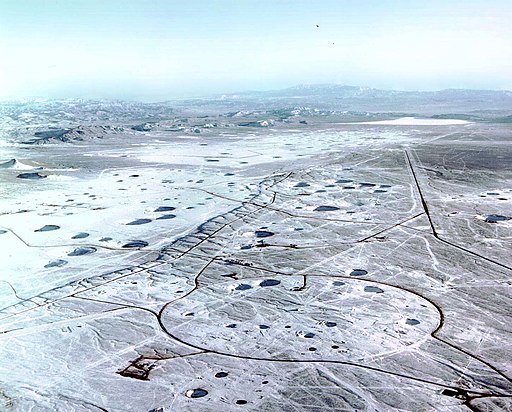
On May 15, according to reporting in the Washington Post and the Guardian, the Trump administration held serious discussions about whether to conduct a nuclear test explosion, and those conversations are continuing.
Though the administration has not made any public remarks on the matter, many experts and policy makers have already chimed in to voice dissent. Lassina Zerbo, the head of the Comprehensive Nuclear Test Ban Treaty Organization, said a nuclear test would “pose a grave challenge to global peace and security.”
Hans Kristensen, who directs the nuclear information project at the Federation of American Scientists, said it was “completely nuts.” Joe Biden, former vice president and presumptive Democratic presidential nominee, said a resumption of testing would be “as reckless as it is dangerous.”
Talk of Reviving Nuclear Tests Raises Alarm
The Trump administration’s recent discussions on whether the U.S. should resume nuclear testing for the first time since 1992 have raised alarm among watchdogs and, if carried out, might affect Los Alamos National Laboratory’s nuclear “stockpile stewardship.”
ARTICLE BY: SCOTT WYLAND | santafenewmexican.com
Storax Sedan shallow underground nuclear test by the United States, used for a cratering experiment. 6 July 1962 (GMT), Nevada Test Site Yield: 104 kt. The main purpose of the detonation was to asses the non military dimension of a nuclear explosion.National security officials at the White House last month talked about lifting the 28-year moratorium on explosive nuclear tests, less as a technical necessity than in response to unconfirmed reports that Russia and China are conducting low-yield tests, according to the Washington Post.
At the moment, there are no actual plans to pursue underground nuclear testing, but talks will remain ongoing and tests will remain an option to consider, two unnamed sources told the Post. Another source said officials were leaning toward other ways to deal with China and Russia.
Nuclear nonproliferation advocates say it is significant that Trump officials are even floating the idea of reviving tests that were halted after the Cold War ended.
OREPA Comments on the Draft Supplement Analysis for the Final Site-Wide Environmental Impact Statement for the Y-12 National Security Complex, Earthquake Accident Analysis
SUMMARY
The Draft Supplement Analysis (SA) is carefully crafted to minimize consideration of the environmental impacts of the NNSA’s “hybrid plan” for enriched uranium operations at the Y-12 National Security Complex starting with the decision to limit the SA to the analysis of earthquake risks only, and then only to three facilities engaged in enriched uranium operations, further limiting the analysis of consequences to radiation releases only, and then only to humans.
Seismic Expert Issues Scathing Review of NNSA Earthquake Study at Oak Ridge Nuclear Bomb Plant
David D. Jackson, Distinguished Professor Emeritus at the University of California Los Angeles, issued a scathing review of the latest study to analyze earthquake risks at the Y-12 Nuclear Weapons Complex in Oak Ridge, Tennessee, saying, “The agency’s analysis is defective in numerous regards. It falls far short of relevant professional and scientific standards.”
Jackson was asked by the Oak Ridge Environmental Peace Alliance to review the National Nuclear Security Administration’s Draft Supplement Analysis (SA) of a 2011 Environmental Impact Statement on plans for continued nuclear weapons production at the Oak Ridge production complex. In September, 2019, federal judge Pamela Reeve set aside two previous SAs and ordered NNSA to prepare additional environmental analysis with special attention paid to the risks presented by earthquakes.
DoE Could be Ready to Go With Minimal Nuke Test in Nevada in ‘Months,’ Pentagon Official Says
It would take only a matter of months for the Department of Energy to perform an underground nuclear-explosive test with minimal diagnostics, a Pentagon official said Tuesday.
BY: DAN LEONE| defensedaily.com
Previous heads of the agency’s semiautonomous National Nuclear Security Administration (NNSA) have talked “about a very quick test with limited diagnostics, though certainly diagnostics, within months,” said Drew Walter, who is performing the duties of deputy assistant secretary of defense for nuclear matters.
“A fuller test, fully diagnostic, and lots of data, all the bells and whistles, so to speak, might be measured in years. But ultimately, if the President directed because of a technical issue or a geopolitical issue, a system to go test, I think it would happen relatively rapidly.”
Walter also said that he believes the NNSA has a borehole at the Nevada National Security Site that would be suitable for such a rapid test.
David Jackson — Discussion of Seismic Risks at the Y-12 National Security Complex and Formal Comments to NNSA Regarding April 2020 Draft Supplemental Analysis for the Site
[embeddoc url=”https://nukewatch.org/wp-content/uploads/2020/05/Final-comments-from-David-Jackson.pdf” download=”all” viewer=”google”]
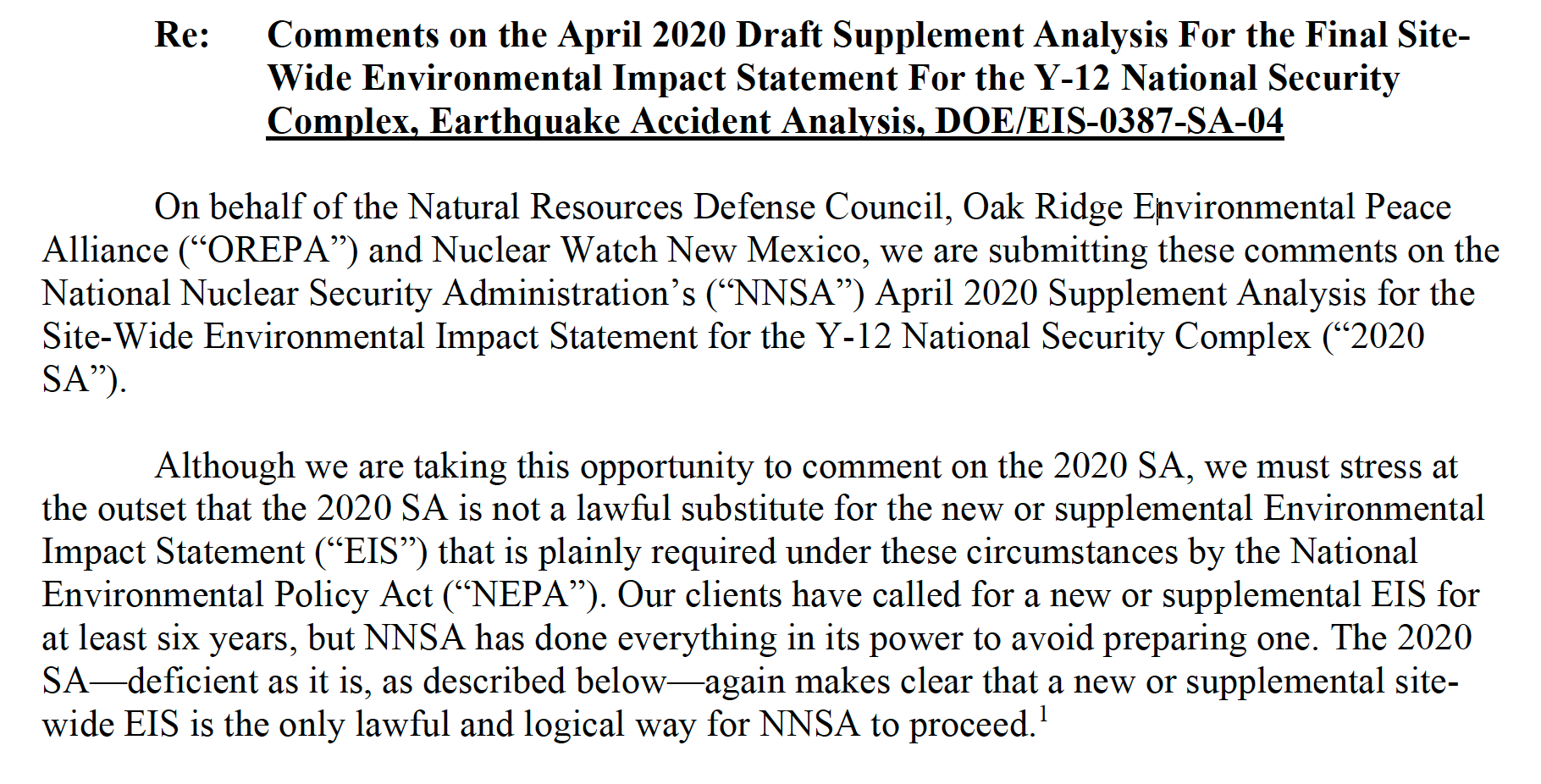
ACT NOW TO STOP THE NEW BOMB PLANT!
The National Nuclear Security Administration was told by a federal judge to prepare a new analysis of the risks of an earthquake at the Y-12 site in Oak Ridge, Tennessee, where nuclear weapons parts are made. Instead, NNSA prepared a very narrow analysis of the effects of an earthquake on three buildings at Y-12. They published this Supplement Analysis in April and invited public comment.

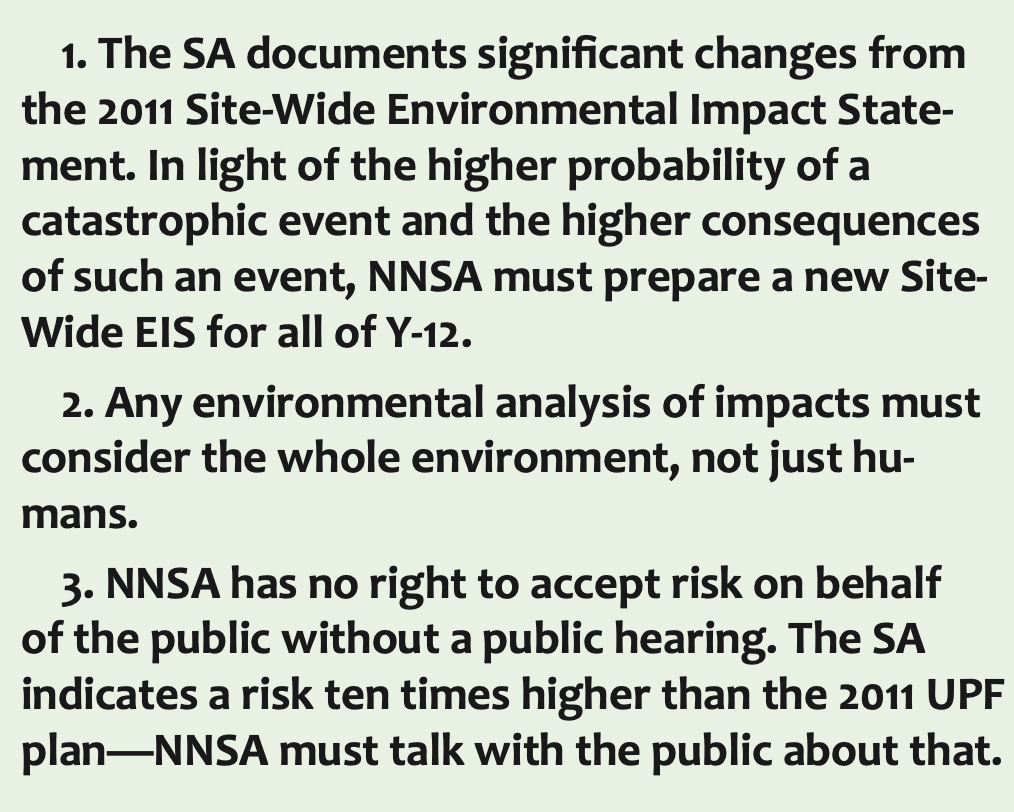
If you want to read the Supplement Analysis, you can find it on OREPA’s website: www.orepa.org. On the right hand column, just under the UPF lawsuit heading.
Your comments should be sent by May 26 to:
Ms. Terri Slack
P.O. Box 2050
Oak Ridge, TN 37831
or by email to: NEPA.Comments@npo.doe.gov
Smith, Cooper Statement on Trump Administration’s Withdrawal From the Open Skies Treaty
May 21, 2020 | PRESS RELEASE
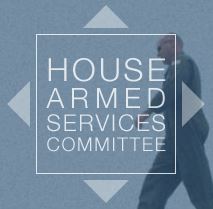 WASHINGTON, D.C. – Representatives Adam Smith (D-Wash.), Chairman of the House Armed Services Committee, and Jim Cooper (D-TN), Chairman of the House Armed Services Subcommittee on Strategic Forces, today issued the following statement in response to reports that the Trump Administration plans to withdraw from the Open Skies Treaty:
WASHINGTON, D.C. – Representatives Adam Smith (D-Wash.), Chairman of the House Armed Services Committee, and Jim Cooper (D-TN), Chairman of the House Armed Services Subcommittee on Strategic Forces, today issued the following statement in response to reports that the Trump Administration plans to withdraw from the Open Skies Treaty:
“The Administration’s decision to withdraw the United States from the Open Skies Treaty is a slap in the face to our allies in Europe, leaves our deployed forces in the region at risk, and is in blatant violation of the law. This decision weakens our national security interests, isolates the United States since the Treaty will continue without us, and abandons a useful tool to hold Russia accountable.
“What’s more, this decision has been made without any consultation with Congress. Not only does the FY20 National Defense Authorization Act require a minimum 120-days’ notification of the withdrawal notice, but also multiple communications from the House Armed Services Committee and other congressional chairmen have gone unanswered.
“The Trump Administration continues to give Russia the upper hand with regards to arms control, which leaves our allies and deployed forces less protected in Europe. Despite the Department of Defense’s rhetoric about the dire need to prepare for ‘great power competition,’ this decision will undoubtedly do the exact opposite, and further fracture our relationships with allies needed to push back against Russian aggression in the region.”
Citing financial cost of pandemic, House liberals demand cut in military spending
Twenty-nine of the House’s most liberal Democratic members called Tuesday for a cut in military spending in the yearly national defense authorization bill — a declaration, they said, that is meant to focus federal resources on the coronavirus pandemic.
MIKE DEBONIS | washingtonpost.com
The signers are almost all members of the Congressional Progressive Caucus, including lead sponsors Barbara Lee (Calif.) and Mark Pocan (Wis.), who have long called for lower levels of Pentagon spending to free more resources for domestic spending. But the pandemic, they argue, presents a new imperative for defense cuts.
Scuttlebiz: Will ‘pit production’ save SRS?
“Don’t be lulled into a false sense of urgency by the federal law “requiring” pit production begin by 2030. That law carries as much weight as the 1982 federal act requiring the nation to have a nuclear waste repository at Yucca Mountain 12 years ago. Still waiting…”
DAMON CLINE | augustachronicle.com
It’s a choice that – from a local economic development perspective – isn’t much of a choice.
Here it is: 1) Convert the Savannah River Site’s unfinished Mixed Oxide Fuel Fabrication Facility into a nuclear weapons plant; or 2) Let the MOX plant keep rotting while New Mexico’s Los Alamos National Laboratory continues producing the nation’s stockpile of “plutonium pits.”
Considering that about $9 billion is at stake, and that SRS needs a new “mission,” I believe it’s safe to assume local leaders want what’s behind Door No. 1.
The National Nuclear Security Administration laid out the two alternatives last month in a draft environmental impact study addressing the nation’s need to manufacture 80 new nuclear weapon cores a year by 2030.
Huge Deficit = Defense Budget Cuts? Maybe Not
The congressional calendar and strategic inertia may come together to keep the defense budget relatively high. The calendar helps because the fiscal 2021 defense budget will likely be passed while Congress is in a free-spending mood.
BY: MARK CANCIAN| breakingdefense.com
The current Washington consensus sees deep defense budget cuts in the face of soaring deficits driven by the emergency legislation to stabilize the American economy as it reels from the effects of the COVID-19 pandemic.
It may be wrong. The congressional calendar and strategic inertia may come together to keep the defense budget relatively high. The calendar helps because the fiscal 2021 defense budget will likely be passed while Congress is in a free-spending mood. The next administration — Republican or Democratic — will develop budgets beyond that, but the constraints of long-standing strategy will prevent major changes to force structure and acquisition that would drive deep budget cuts.
Will the Trump administration’s accusations doom the nuclear test ban treaty?
“Although US accusations are unlikely to be true, they could give a convenient pretext to officials who want to withdraw the US signature from the treaty, allowing the United States to resume its own nuclear testing. In fact, that may be the entire point.”
ANDREAS PERSBO | thebulletin.org
In April, while most of the world was focused on defeating a devastating viral pandemic, the US State Department quietly released its annual compliance report, describing whether and how the United States and other countries have been abiding by various arms control agreements. The report is sober reading for those hoping that the coronavirus would usher in a new era of international collaboration.
The report made waves for raising “concerns” about China’s adherence to a “zero-yield” nuclear testing standard, as called for by the 1996 Comprehensive Nuclear Test Ban Treaty. Although neither the United States or China has ratified the treaty, both have signed it, and both claim to abide by a nuclear testing moratorium.
Released From Silence
One year anniversary of the release of the documentary short film “The Atomic Soldiers”
“The Atomic Soldiers” lets the veterans who witnessed the Hood test in Nevada tell their own stories. But the painful memories sometimes choke their recollections, leaving long and moving silences in place of words. “You don’t send 14,000 troops through ground zero and not call it anything but genocide,” says one.
Remembering Dave Freeman – green cowboy, pioneer of U.S. energy policy
Arjun Makhijani | ieer.org
It was 1970. Dave Freeman had transitioned from being an energy advisor in Johnson’s White House to Nixon’s. At one of our lunches since he had moved to Washington, D.C. after retiring as the Chairman of the Port of Los Angeles, he recounted a conversation with John Ehrlichman, Nixon’s assistant for domestic policy:
“Ehrlichman told me ‘Dave, you had better get out of here. Things are going to get very hot and nasty in the coming campaign [to re-elect Nixon]. This is no place for a Democrat like you.’”
Dave found a most interesting and, as it turned out, historic exit. He convinced the Ford Foundation to give him four million dollars (about twenty five million in today’s money) to establish the Energy Policy Project within the Foundation. It would approach energy policy comprehensively; among other things it would explore how much of energy supply could be replaced by energy efficiency.
Russian officials have already repeatedly warned in the past that its Eastern European neighbours’ decision to host US-made strategic systems, including components of America’s Aegis Ashore missile defence system, make them targets for Russia’s strategic nuclear response in the event of a war.
sputniknews.com
The redeployment of US nuclear weapons from Germany to Poland would be a direct violation of the Russia-NATO founding act of 1997, Russian Foreign Minister Sergei Lavrov has said.
“This would be a direct violation of the Founding Act on Mutual Relations between Russia and NATO, in which NATO undertook not to place nuclear weapons in the territory of new members of the North Atlantic Alliance, either at that moment or in the future…I doubt that these mechanisms will be implemented in practical terms,” Lavrov said, speaking to reporters following a videoconference-based meeting of the Council of Baltic Sea States on Tuesday.
Earlier Tuesday, Foreign Ministry spokeswoman Maria Zakharova said that the redeployment of US nuclear weapons from Germany to Poland would serve to further damage already-strained Russia-NATO relations and escalate tensions.
Energy Department Nominee Shifts on Yucca Mountain Question
“The administration will not be pursuing Yucca Mountain as a solution for nuclear waste, and I am fully supportive of the president’s decision and applaud him for taking action when so many have failed to do so,” [Mark] Menezes told Cortez Masto.
BY GARY MARTIN | reviewjournal.com
A contractor walks into the south portal of Yucca Mountain during a congressional tour near Mercury on Saturday, July 14, 2018. (Chase Stevens Las Vegas Review-Journal @csstevensphoto)WASHINGTON — Mark Menezes, the nominee for deputy secretary of the Energy Department, on Wednesday clarified remarks he made in February, saying the Trump administration has no plans to use Yucca Mountain as a nuclear waste storage site.
Sen. Catherine Cortez Masto, D-Nev., pressed Menezes during his confirmation hearing before the Senate Energy and Natural Resources Committee, asking for a clarification.
Ground U.S.-North Korean Diplomacy in International Law
In the midst of a global pandemic, it is clear that cooperative measures to tackle modern-day global security threats are critical.
By: Alicia Sanders-Zakre, Former NukeWatch NM Summer Intern | nationalinterest.org
In the years since the summits between President Donald Trump and North Korean leader Kim Jong-un in Singapore and Hanoi, U.S.-North Korean diplomacy has fizzled to a halt. This is a grave mistake. Both North Korea and the United States need to get serious about reviving diplomatic efforts to eliminate their nuclear weapons.
In the midst of a global pandemic, it is clear that cooperative measures to tackle modern-day global security threats are critical. North Korean and U.S. nuclear weapons put the rest of the world at risk—and drain valuable resources from needed economic recovery efforts and social services. ICAN estimated that together North Korea and the United States spent $36 billion on nuclear weapons in 2019. The United States spent $35.4 billion and North Korea spent about $0.6 billion.
Raytheon to close ABQ site
Raytheon Technologies Corp. is shutting down operations at the Sandia Science and Technologies Park in southeast Albuquerque, where the company employs about 200 people.
BY KEVIN ROBINSON-AVILA | abqjournal.com
Raytheon Technologies is closing its facility at Sandia Science and Technologies Park in Albuquerque and laying off some of its 200 local employees. (Adolphe Pierre-Louis/Journal)
Copyright © 2020 Albuquerque Journal
Raytheon’s Albuquerque operations will be transferred to other company facilities outside of New Mexico, company spokesperson Heather Uberuaga told the Journal Tuesday.
“After careful and deliberate consideration, Raytheon Technologies has chosen to close the company’s Albuquerque facility and relocate support for key capabilities and customer programs to our other facilities around the country,” Uberuaga wrote in an email.
Trump Admin Sprints to Weaken Environmental Protections During Pandemic
‘There’s a lot they want to get done before the election, just in case.’
The Trump administration is diligently weakening U.S. environment protections even amid a global pandemic, continuing its rollback as the November election approaches.
During the COVID-19 lockdown, U.S. federal agencies have eased fuel-efficiency standards for new cars; frozen rules for soot air pollution; proposed to drop review requirements for liquefied natural gas terminals; continued to lease public property to oil and gas companies; sought to speed up permitting for offshore fish farms; and advanced a proposal on mercury pollution from power plants that could make it easier for the government to conclude regulations are too costly to justify their benefits.
Pit Production Must ‘Press Forward’ Despite Coronavirus Pandemic, NNSA Chief Says
Preparations and planning for plutonium pit production must continue amid the novel coronavirus pandemic, a “difficult” and challenging time, National Nuclear Security Administration chief Lisa Gordon-Hagerty wrote in a recent letter.
“The plutonium pit production mission is one of our highest national security priorities and is being done in accordance with congressional direction,” Gordon-Hagerty wrote to U.S. Sen. Tom Udall, a New Mexico Democrat. “We must press forward with this project in order to meet Department of Defense deliverables.”
Udall and U.S. Sen. Martin Heinrich, another New Mexico Democrat, in late April wrote to the National Nuclear Security Administration, asking the weapons-and-nonproliferation agency to extend a public comment period tied to plutonium pit production at Los Alamos National Laboratory, near Albuquerque and Santa Fe.
Gordon-Hagerty in her April 30 response said she appreciated the “interest in this matter” and that she takes the “concerns very seriously.”
Moving Forward With the W93 SLBM Warhead Strengthens U.S. and British Security
In his 2009 Prague speech, President Obama declared that “As long as [nuclear]weapons exist, the United States will maintain a safe, secure and effective arsenal to deter any adversary, and guarantee that defense to our allies.” To ensure that goal, he advanced a modernization program for America’s aging nuclear forces. President Trump, in his 2018 review of U.S. nuclear posture, reaffirmed that commitment and carried forward the program for force modernization that now will include a new program for a modern SLBM warhead—the so-called W93 to be carried in a new Mark 7 reentry vehicle.

The requirement to maintain a safe, secure and effective arsenal is often taken to mean the replacement of America’s aging strategic triad forces and their command and control. That effort, while truly vital, is only half what is needed.
Bulging Deficits May Threaten Prized Pentagon Arms Projects
WASHINGTON — The government’s $3 trillion effort to rescue the economy from the coronavirus crisis is stirring worry at the Pentagon. Bulging federal deficits may force a reversal of years of big defense spending gains and threaten prized projects like the rebuilding of the nation’s arsenal of nuclear weapons.
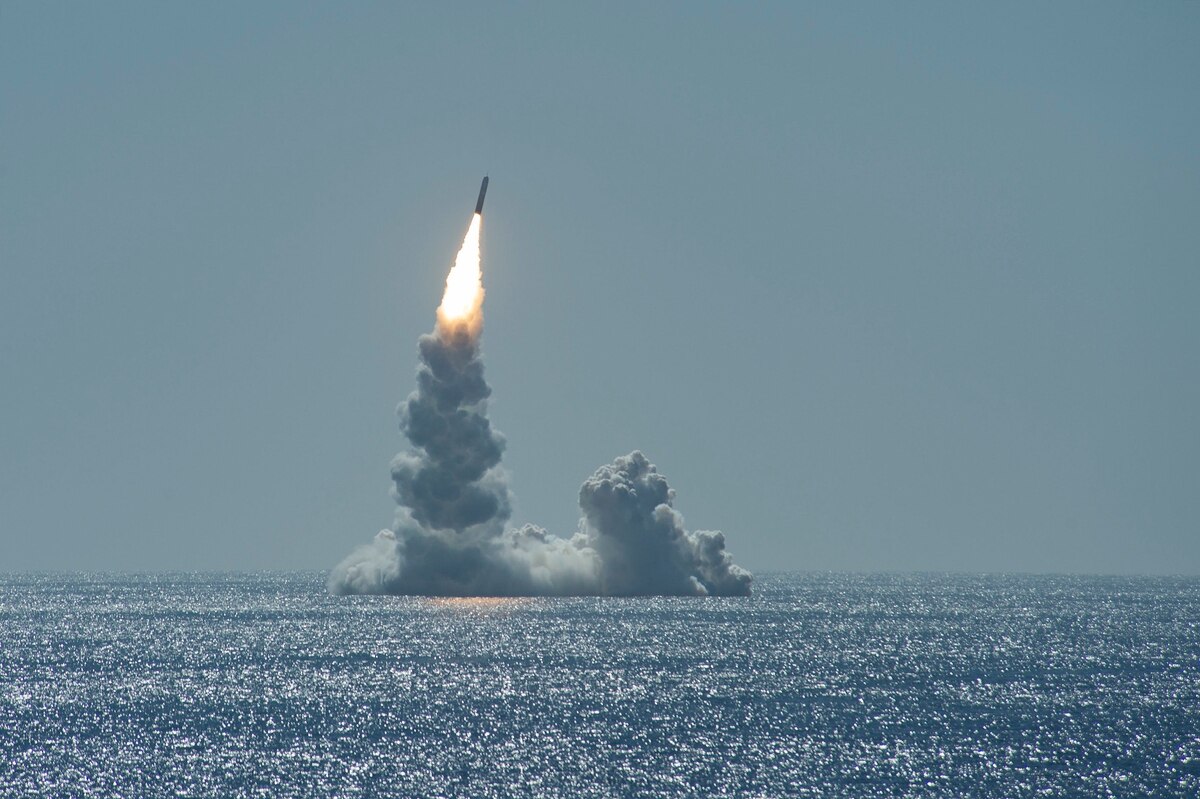
Defense Secretary Mark Esper says the sudden burst of deficit spending to prop up a damaged economy is bringing the Pentagon closer to a point where it will have to shed older weapons faster and tighten its belt.
“It has accelerated this day of reckoning,” Esper said in an Associated Press interview.
It also sets up confrontations with Congress over how that reckoning will be achieved. Past efforts to eliminate older weapons and to make other cost-saving moves like closing under-used military bases met resistance. This being a presidential election year, much of this struggle may slip to 2021. If presumptive Democratic nominee Joe Biden wins, the pace of defense cuts could speed up, if he follows the traditional Democratic path to put less emphasis on defense buildups.
ENOUGH IS ENOUGH: 2019 GLOBAL NUCLEAR WEAPONS SPENDING
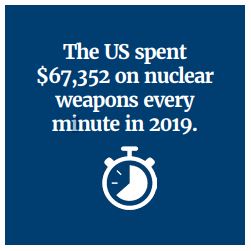 The nuclear-armed states spent nearly three-quarters of one hundred billion dollars in 2019 on building and maintaining nuclear warheads and delivery systems. The incalculable human and environmental costs of nuclear weapons only add to this shocking figure. From 2018 to 2019, there was an estimated $7.1 billion increase in nuclear weapon spending, and these totals will only continue to rise in the next decade according to documented nuclear weapon programmes and budgets in several nuclear-armed countries.
The nuclear-armed states spent nearly three-quarters of one hundred billion dollars in 2019 on building and maintaining nuclear warheads and delivery systems. The incalculable human and environmental costs of nuclear weapons only add to this shocking figure. From 2018 to 2019, there was an estimated $7.1 billion increase in nuclear weapon spending, and these totals will only continue to rise in the next decade according to documented nuclear weapon programmes and budgets in several nuclear-armed countries.
COLLECTIVE COMMENTS: on the National Nuclear Security Administration’s (NNSA’s) Draft Supplement Analysis of the 2008 Site-Wide Environmental Impact Statement for the Continued Operation of Los Alamos National Laboratory (LANL) for Plutonium Operations
These comments were signed onto by over 100 individuals and organizations.
THANK YOU to all those who participated!
Help Us Stop Expanded Plutonium Pit Production at the Los Alamos Lab! Submit Written Formal Comment.
Click to See Suggested Comments
Due Saturday May 9 but generally the government will accept comments for the following week.
See Updated Plutonium Pit Production Fact Sheet Here
Cleanup of US Nuclear Waste Takes Back Seat as Virus Spreads
ALBUQUERQUE, N.M. (AP) — The U.S. government’s efforts to clean up Cold War-era waste from nuclear research and bomb making at federal sites around the country has lumbered along for decades, often at a pace that watchdogs and other critics say threatens public health and the environment.
Now, fallout from the global coronavirus pandemic is resulting in more challenges as the nation’s only underground repository for nuclear waste finished ramping down operations Wednesday to keep workers safe.
Over more than 20 years, tons of waste have been stashed deep in the salt caverns that make up the southern New Mexico site. Until recently, several shipments a week of special boxes and barrels packed with lab coats, rubber gloves, tools and debris contaminated with plutonium and other radioactive elements were being trucked to the remote facility from South Carolina, Idaho and other spots.
OREPA Accuses NNSA of Mendacity on Nuclear Criticality Safety
A letter dated April 6, 2020 from Lisa Gordon-Hagerty, Administrator of the National Nuclear Security Administration, to Consolidated Nuclear Services, operating contractor of the Pantex and Y-12 nuclear weapons facilities, highlights ongoing criticality safety deficiencies at the Y-12 National Security Complex in Oak Ridge, Tennessee.
The letter, a Preliminary Notice of Violation, characterizes the nuclear criticality safety deficiencies as “of high safety significance.” In the letter, NNSA reveals that CNS has failed to implement the criticality safety plan that was in place when it took over operations at the facility in 2014.
Russia Says Using New U.S. Warheads Would Provoke Nuclear Retaliation
Fires are still blazing near the site of the world’s worst nuclear disaster. Ukraine’s President Volodymyr Zelenskiy has visited firefighters trying to extinguish the flames, marking the 34th anniversary of the accident.
ARTICLE BY: CLYDE HUGHES | upi.com
Wednesday, foreign ministry spokeswoman Maria Zakharova cautioned the U.S. military that using those weapons against Russia would warrant a nuclear retaliatory strike.
“Any attack involving a U.S. submarine-launched ballistic missile, regardless of its weapon specifications, would be perceived as a nuclear aggression,” Zakharova said. “Those who like to theorize about the flexibility of American nuclear potential must understand that in line with the Russian military doctrine such actions are seen as warranting retaliatory use of nuclear weapons by Russia.”
The U.S. State Department suggested last week that equipping Navy submarines with the low-yield nukes — which have explosive power similar to the atomic bombs dropped in Japan during World War II — would only serve to deter military provocation from Russia and China.
Defense Budget Brawl Looms After Pandemic
Defense budget cuts are looming as the coronavirus pandemic places pressure on the federal budget across various agencies.
ARTICLE BY: REBECCA KHEEL | thehill.com
The Pentagon had already been expecting relatively flat budgets for the next few years due to economic constraints caused by the widening deficits in the country.
But with the pandemic, the deficit is projected to explode after Congress passed trillions of dollars in coronavirus relief packages, with more aid bills expected. Defense budget analysts are predicting that will mean cuts to defense spending down the line.
Meanwhile, Democrats say the crisis should result in a rethinking of national security that gives less money to the Pentagon and more to areas like public health.
Agency seeks $8K reimbursement from former executive director
REGIONAL COALITION OF LANL COMMUNITIES
Two years after parting ways with the Regional Coalition of LANL Communities, state Rep. Andrea Romero is still being haunted by improper reimbursements that cast a dark cloud over her tenure as the agency’s executive director.
The board of the taxpayer-funded agency that represents local governments around Los Alamos National Laboratory recently decided to ask Romero to return $8,000 in questionable reimbursements she received for travel and entertainment expenses while she was at the helm of the organization, which occurred before she was elected to a seat in the state House of Representatives.
But the board is unlikely to pursue the matter further if Romero rejects the request.
The board reached its decision to try to recoup the money after receiving a review of past audits of the agency, also known as RCLC, from its contracted legal counsel, Nancy Long.
Fire Licks the Chernobyl Perimeter
Fires are still blazing near the site of the world’s worst nuclear disaster. Ukraine’s President Volodymyr Zelenskiy has visited firefighters trying to extinguish the flames, marking the 34th anniversary of the accident.
ARTICLE BY: CINDY FOLKERS | beyondnuclearinternational.org
How close to the Chernobyl nuclear plant did the recent forest fires come? Did the smoke that enveloped Kyiv contain dangerous levels of radioactivity? We look at these and other questions about the deadly legacy of the 1986 nuclear disaster.
The recent wildfires in Ukraine and Belarus came dangerously close to the Chernobyl nuclear power plant site. Some burn still; others are smoldering. So, too, are the lingering doubts about denials from the Ukraine government that the fires, which tore through areas of the already radioactive Chernobyl Exclusion Zone, posed no radiological risks to those breathing in their fumes.
Suggested comments are here
We encourage you customize your comments. Please feel free to use as many or all of our words as you like. But the most important thing is to get something in! THANK YOU!
The Trump Administration Is Suddenly Pretending That It Didn’t Blow Up the Iran Nuclear Deal
BY: FRED KAPLAN | slate.com
While everyone is riveted to the deadly grind of COVID-19, the Trump administration is stepping up its efforts to crush the Islamic Republic of Iran through one of the most squirrely legal arguments that a nation-state has ever devised.
The move is also a political shot in the foot, because it amounts to an unwitting admission that President Donald Trump was wrong to pull out of the Iran nuclear deal.
Nuclear News Archives – 2019
“This report makes clear that DOE is blowing smoke when it says that it will produce 80 plutonium pits per year by 2030 for new unneeded nuclear weapons. After all, this is the gang that can’t shoot straight. They need to slow down, do it right and for sure do it safely. Above all the feds must concretely demonstrate a real need for expanded pit production before they fleece the American taxpayer of tens of billions of dollars.” — Jay Coghlan, Director – Nuclear Watch New Mexico
Frantic parents fear for kids after radioactive contamination found at Ohio middle school
“It’s so scary that my child has been exposed to this because I have no idea how it’s going to affect him,” one mother said.
BY SAFIA SAMEE ALI | nbcnews.com
Ashley Day has always worried about the health risks of living a few miles from a defunct nuclear power plant in Piketon, Ohio. So, when her son Kendon came home Monday and told her school had been canceled for the rest of the year, she had a sinking feeling there was a connection.
A few hours later, her fears were confirmed: The Scioto Valley Local School District declared in a letter that Zahn’s Corner Middle School would be shut down for the remainder of the school year because of possible radioactive contamination from the nearby Portsmouth Gaseous Diffusion Plant, which the federal Department of Energy is in the process of decommissioning.
“I felt anxiety, anger, and paranoia all at once,” she said. “It’s so scary that my child has been exposed to this because I have no idea how it’s going to affect him.”
Editorial: LANL leaders must make safety the lab’s top mission
“Falling short of the bare minimum in the eyes of the DOE is a far cry from where the public expects or needs LANL to be.”
Credit: Christopher Thompson for The New York TimesBY ALBUQUERQUE JOURNAL EDITORIAL BOARD | cnn.com
A new lab manager, a new mission to modernize the nation’s nuclear arsenal with 30 plutonium “pits” for nuclear bombs, and the same old lackadaisical approach to safety.
Welcome to Los Alamos National Laboratory, a company town where the culture is apparently so ingrained, even tough Department of Energy criticisms are unable to penetrate. At a time when saber-rattling is de rigueur, when concerns over North Korea’s arsenal and a nuclear Iran are high, when HBO is airing “Chernobyl,” that does nothing to instill public trust.
LANL got dinged last year after it mistakenly used a commercial air cargo service for a cross-country radioactive plutonium shipment. In 2014, LANL’s use of the wrong kitty litter burst a storage barrel and prompted a nearly three-year shutdown of the nation’s one-and-only nuclear waste repository, WIPP in Carlsbad. And the year before, a general slate of safety issues at the lab prompted a moratorium on plutonium work.
The latest weaknesses “if uncorrected, can allow layers of defense for nuclear safety to degrade to the extent they did leading to the pause in July 2013 of key fissile material operations in the Plutonium Facility at LANL for over four years,” the DOE audit says.
And that is a huge issue considering the lab is ramping up production on the devices that act as nuclear bomb triggers. The 30-pit order is expected to be met in six years, and there’s no other facility in the country that can fill it.
Ohio town worries about safety after radioactive contamination is found at middle school
On Monday, Zahn’s Corner Middle School in Piketon was closed because enriched uranium had been detected inside the building and neptunium-237 had been detected by an air monitor next to it.
BY CHUCK JOHNSON & SUSAN SCUTTI | cnn.com
(CNN) Are we safe? That’s the concern that’s been in the back of neighbors’ minds when they look at the looming Portsmouth Gaseous Diffusion Plant in Pike County, Ohio, Jennifer Chandler said.
“It looks like they make clouds there,” the Piketon village councilwoman thought as a child, seeing steam coming out of the stacks. “When I was growing up, I didn’t have any idea what they did.”
The US Department of Energy plant was built to produce enriched uranium for the nation’s nuclear weapons program during the Cold War and, in later years, supported commercial nuclear reactors. One of three such plants in the United States, it operated from 1954 to 2001, when it commenced decontamination and decommissioning, which continues today.
In the past five years, five students in the nearby Scioto Valley Local School District have been diagnosed with cancer; three of them have died, Chandler said.
2019 Preparatory Meeting for 2020 Nonproliferation Treaty Review Conference Ends in Failure
NPT Looks Ahead to 2020 Review Conference Without Consensus Recommendations
BY ALICIA SANDERS-ZAKRE | armscontrol.org
NPT states-parties failed to adopt a common set of recommendations for the 2020 Review Conference on the final day of the two week-long 2019 PrepCom on Friday, May 10. Nevertheless, most states expressed optimism in concluding statements about prospects for next year’s review conference and underlined the importance of action in the intervening 12 months on key NPT-related commitments.
The recommendations drafted by the chair, Syed Hussin of Malaysia, failed to garner consensus especially after a round of revisions that sought to take into account the suggestions of the majority of NPT states-parties led several nuclear-weapon states and some of their allies to express their displeasure and their support for the earlier draft. Since NPT states did not adopt the revised draft recommendations by consensus, the document will be issued instead as a working paper submitted by the PrepCom chair. The chair also issued an 8-paragraph reflection on the PrepCom.
In his closing remarks, the incoming president-designate of the 2020 Review Conference, Rafael Mariono Grossi of Argentina promised to “begin work on Monday” on an ambitious plan for consultations with states-parties.
He later tweeted: “As #NPT2019 closes work starts to prepare a successful Review of Non-Proliferation Treaty in 2020. I will consult extensively reach out to all. Everybody’s goal is success. No less.
As #NPT2019 closes work starts to prepare a successful Review of Non Proliferation Treaty in 2020. I will consult extensively reach out to all. Everybody’s goal is success. No less. @UN_Disarmament @CancilleriaARG @ArmsControlNow @NTI_WMD pic.twitter.com/pbaWHq2rsN
— Rafael MarianoGrossi (@rafaelmgrossi) May 10, 2019
Balky Capacitors Could Delay Two NNSA Nuke Refurb Programs
BY DAN LEONE | exchangemonitor.com
WASHINGTON — The National Nuclear Security Administration (NNSA) will be late with initial deliveries to the Pentagon of two refurbished nuclear weapons, the head of the semiautonomous nuclear-weapons agency said here Wednesday.
The Air Force was supposed to get its refurbished B61, to be called B61-12, in 2020. The Navy was supposed to get its first W88 Alt 370 in December 2019. Because of defects with electrical capacitors needed for both weapons, those those dates are now “expected” to slip, an NNSA spokesperson said. How far is yet to be determined.
After disclosing the slip in a hearing of the Senate Armed Services strategic forces subcommittee, NNSA Administrator Lisa Gordon-Hagerty told Weapons Complex Morning Briefing that her agency has been evaluating the bad capacitors for “the last couple of months.”
Capacitors store electric charges. The defective items intended for the B61-12 and W88 Alt 370 are commercial units procured by the NNSA’s Kansas City National Security Campus, which acquires and manufactures the non-nuclear parts of nuclear weapons. Gordon-Hagerty said it will take several months to decide what to do about the wonky components.
Continue reading
Support the JASON science-advisory group
The elite panel that guides the US government is undermined by wavering financial support. More-secure backing is in the national interest.
The Jasons have provided the US government with independent advice on classified military developments and nuclear weapons. Credit: Ringo Chiu/AFP/Gettynature.com | If there is one thing that President Donald Trump’s administration sorely needs, it is rational, independent science-based advice on crucial issues. Which is why it was so concerning when the US Department of Defense (DOD) abruptly decided in March to end its long relationship with a science-advisory panel known as JASON.
For nearly 60 years, the scientists on the panel — the Jasons — have provided the US government with unvarnished, independent advice on matters ranging from classified military developments and nuclear weapons to artificial intelligence and global warming. Its members are a roll call of elite and illustrious scientists.
Federal nuclear board nixes request for hearing on New Mexico waste facility
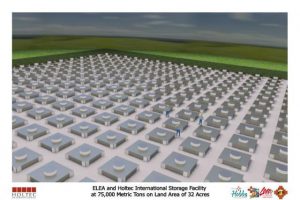
By Rebecca Moss | rmoss@sfnewmexican.com
A federal board that oversees commercial nuclear materials and licenses said Tuesday it has rejected a request by a group of opponents over a proposed nuclear waste storage site in Southern New Mexico.
Holtec International, a New Jersey-based company specializing in nuclear reactor technology, is waiting on the U.S. Nuclear Regulatory Commission to approve its license for an expansive facility that could be used to hold all of the nation’s spent nuclear fuel — radioactive uranium left over from power production.
Engel, McCaul Introduce Legislation to Maintain Limits on Russian Nuclear Forces
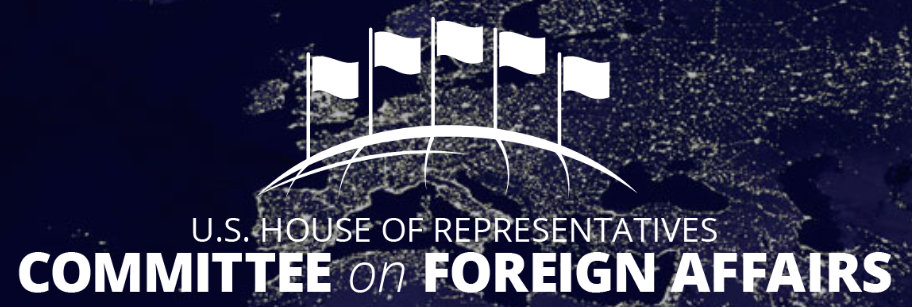 WASHINGTON—Representative Eliot L. Engel, Chairman of the House Committee on Foreign Affairs, and Representative Michael McCaul, the Committee’s ranking member, today introduced legislation calling on the Trump Administration to retain limits on Russia’s nuclear forces. The “Richard G. Lugar and Ellen O. Tauscher Act to Maintain Limits on Russian Nuclear Forces” calls for an extension of New Strategic Arms Reduction Treaty (New START) limits on Russia until 2026, as allowed under the Treaty, unless Russia violates the Treaty or until a new agreement in is in place that provides equal or greater constraints, transparency, and verification measures with regard to Russia’s nuclear forces.
WASHINGTON—Representative Eliot L. Engel, Chairman of the House Committee on Foreign Affairs, and Representative Michael McCaul, the Committee’s ranking member, today introduced legislation calling on the Trump Administration to retain limits on Russia’s nuclear forces. The “Richard G. Lugar and Ellen O. Tauscher Act to Maintain Limits on Russian Nuclear Forces” calls for an extension of New Strategic Arms Reduction Treaty (New START) limits on Russia until 2026, as allowed under the Treaty, unless Russia violates the Treaty or until a new agreement in is in place that provides equal or greater constraints, transparency, and verification measures with regard to Russia’s nuclear forces.
The U.S. Wanted to Hide Nukes in Arctic Ice Tunnels. The Plan Blew Up in Their Faces.
BY VINCE HOUGHTON | time.com May 7, 2019
As far as these things go, Camp Century was a pretty good cover. It was nominally designed as an underground military research station, located about 150 miles east of the American air base at Thule, Greenland. The stated purpose of Camp Century was to improve the American defense capability in the Arctic — to develop better survival and transportation techniques, and to obtain more useful knowledge about the harsh climate and the physical properties of the region. In essence, we covered up for a super-secret operation using a kinda-secret one.
Producing mass destruction: Private companies and the nuclear weapons industry
ICAN and PAX published a new report that shows how the commercial sector is massively involved in producing nuclear weapons. The report, “Producing mass destruction: Private companies and the nuclear weapons industry”, is part of the Don’t Bank on the Bomb project.
EXECUTIVE SUMMARY | dontbankonthebomb.com
FULL REPORT AVAILABLE HERE
 Governments are contracting at least US$ 116 billion (€ 102 billion) to private companies in France, India, Italy, the Netherlands, United Kingdom, and the United States for production, development and stockpiling of nuclear weapons. State owned companies in China connected to nuclear weapon production are starting to raise money through bond issuances, while Israeli, Pakistani, North Korean, and Russian nuclear programmes are still not transparent.
Governments are contracting at least US$ 116 billion (€ 102 billion) to private companies in France, India, Italy, the Netherlands, United Kingdom, and the United States for production, development and stockpiling of nuclear weapons. State owned companies in China connected to nuclear weapon production are starting to raise money through bond issuances, while Israeli, Pakistani, North Korean, and Russian nuclear programmes are still not transparent.
World BEYOND War: Updated 2019 Mapping of Militarism in the World
Open the mapping system, check out, and customize the maps here.
Click HERE to view some examples of what the map system can show
BY DAVID SWANSON Executive Director, World BEYOND War | worldbeyondwar.org – May 6, 2019
ARMS CONTROL TODAY – REMARKS: Gorging at the Nuclear Buffet Table
“It’s like showing up at a buffet and, instead of having a balanced meal, you say, “I will just gorge on every single capability that is out there.” When you only need a balanced meal to do the job, you don’t need to eat everything at the nuclear buffet table, including offensive and defensive weapons.
BY SEN. CHRIS VAN HOLLEN | armscontrol.org – May 2019
Unlike a dinner buffet where it’s “all you can eat at a fixed price,” the nuclear buffet table requires you to pay for everything. With the current spending plan, that is right now estimated to be $1.7 trillion over the next 30 years by the Congressional Budget Office. If you add on all the other capabilities this administration apparently wants to add on, you’re talking about an even bigger price tag.” Senator Chris Van Hollen, Appropriations Committee”
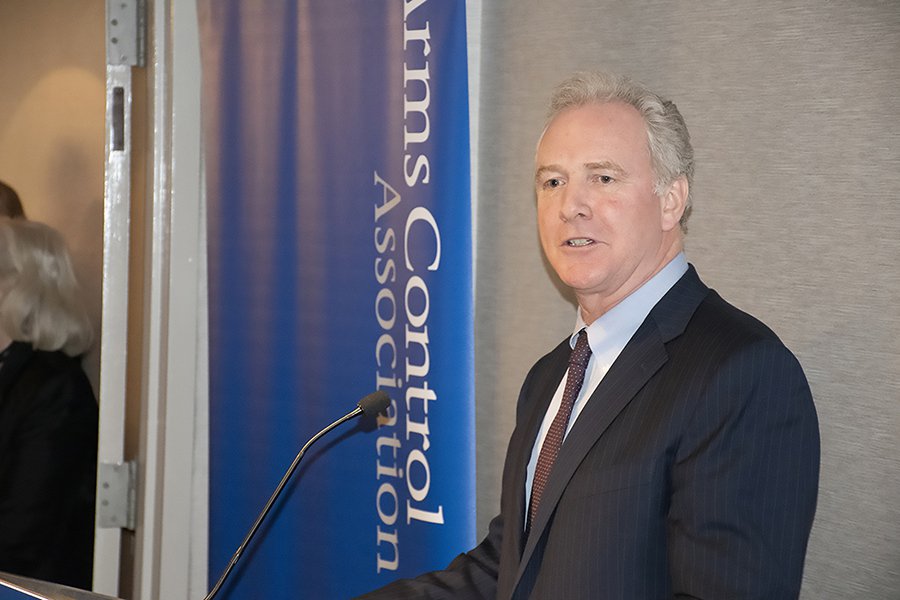
Before I ever thought of running for elected office, I interacted a lot with folks at the Arms Control Association and in the arms control community back in the 1980s. I grew up in a Foreign Service family in many places around the world, but one of the things that I remember most and that had a great impact on me was when I read Jonathan Shell’s New Yorker series, “The Fate of the Earth,” that described what would happen to the planet after a nuclear war.
The Madness of Nuclear Deterrence
“The dangers have only become more acute in the decades since I tried to convince Thatcher.”
BY MIKHAIL GORBACHEV | wsj.com
‘Deterrence cannot protect the world from a nuclear blunder or nuclear terrorism,” George Shultz, William Perry and Sam Nunn recently wrote. “Both become more likely when there is no sustained, meaningful dialogue between Washington and Moscow.” I agree with them about the urgent need for strategic engagement between the U.S. and Russia. I am also convinced that nuclear deterrence, instead of protecting the world, is keeping it in constant jeopardy.
I asked her: “Are you really comfortable sitting on a nuclear powder keg?” I showed her a diagram representing the world’s nuclear arsenals, grouped into hundreds of squares. Each square, I told her, is enough to eliminate human civilization as we know it. I was unable to persuade Margaret Thatcher. We hear the same arguments today, including in the U.S. and Russia.
Continue reading
Hear ye, hear ye ?
The official 2019 @FAScientists US Nuclear Notebook (written by @nukestrat and yours truly) is out today in @BulletinAtomic! ??
Freely access the most up-to-date estimates of the US nuclear arsenal here:https://t.co/9HboPoKhMT pic.twitter.com/DiIAsBh5fv
— Matt Korda (@mattkorda) April 29, 2019
Report: LANL Nuclear Safety Falls Short
This article illustrates why planned expanded plutonium pit production for new nuclear weapons at the Los Alamos Lab has a high probability of failure.
Los Alamos National Laboratory is again facing criticism for failing to ensure nuclear safety in its operations, this time from a U.S. Department of Energy assessment office. (AP Photo/Albuquerque Journal)BY MARK OSWALD | abqjournal.com
SANTA FE – The U.S. Department of Energy has again found that Los Alamos National Laboratory falls short in ensuring nuclear safety in its operations, even as the lab moves toward a major increase in plutonium work under a mandate to ramp up manufacture of the cores of nuclear weapons.
A report released Monday by a DOE assessment team provides a long list of problems in how LANL manages nuclear safety issues. It notes deficiencies by both the private consortium that managed the lab for about 12 years before losing the $2 billion-plus annual operating contract last year and as well Triad National Security LLC, which took over Nov. 1.
The report says former contractor Los Alamos National Security LLC, or LANS, allowed safety issues to fester with “significant weaknesses.”
There are “institutional behaviors that have allowed identified problems to go uncorrected, problem recurrences to be routinely accepted, and corrective actions to often be delayed for years,” according to the report DOE’s Office of Enterprise Assessments.
The safety lapses are serious enough that they could lead to another shutdown of operations at LANL’s plutonium facility, the assessment suggests.
Read the report HERE
From the report’s executive summary: Overall, this assessment identified significant weaknesses in the LANS IM [issues management] process and institutional behaviors that have allowed identified problems to go uncorrected, problem recurrences to be routinely accepted, and corrective actions to often be delayed for years.Although the assessment team did not identify any immediate threats to workers, the public, or the environment, these weaknesses in IM, if uncorrected, can allow layers of defense for nuclear safety to degrade to the extent they did leading to the pause in July 2013 of key fissile material operations in the Plutonium Facility at LANL for over four years.
“According to the Government Accountability Office (GAO), EM’s environmental liability grew by about $214 billion from fiscal years 2011 through 2018, more than doubling its cleanup liability in just six years. This dramatically outpaced the roughly $45 billion EM spent on cleanup activities during that period.”
“NukeWatch: We should be expanding cleanup programs instead of nuclear bomb production that made this mess to begin with.”
View the PDF
 Our Episode 03 doesn’t have the Night King or hordes of the undead, BUT I do get to talk with Leah Greenberg, co-founder of Indivisible and one of Time Magazine’s 100 most influential people of 2019, to discuss her journey from congressional staffer to community organizer. She talks about how the idea for a 2016 handbook ignited a progressive movement of civic engagement for everyday people. Also, Ploughshares Fund’s own Michelle Dover reflects on the legacy of Indiana Senator Richard Lugar. John Carl Baker takes a closer look at the motives and intentions of Trump’s offer for arms control talks with Russia and China.
Our Episode 03 doesn’t have the Night King or hordes of the undead, BUT I do get to talk with Leah Greenberg, co-founder of Indivisible and one of Time Magazine’s 100 most influential people of 2019, to discuss her journey from congressional staffer to community organizer. She talks about how the idea for a 2016 handbook ignited a progressive movement of civic engagement for everyday people. Also, Ploughshares Fund’s own Michelle Dover reflects on the legacy of Indiana Senator Richard Lugar. John Carl Baker takes a closer look at the motives and intentions of Trump’s offer for arms control talks with Russia and China.
You can listen here: http://pressthebutton.libsyn.com/
Or – Listen and subscribe on iTunes · Spotify · SoundCloud · Google Play
DOD Official Ducks Question of Plutonium Pit Assurance if Congress Allows Only 1 Site
WASHINGTON – A senior Pentagon official declined to say here Wednesday whether he believes the Department of Energy can deliver nuclear warheads for next-generation intercontinental ballistic missiles on time if Congress does not fund both the plutonium-pit production plants the civilian agency wants to build.
“I’m aware of the issue, but I wouldn’t want to sort of step on my colleagues’ toes by addressing the details,” David Trachtenberg, deputy undersecretary of defense for policy, said following a speech at the Brookings Institution. “I’ll defer on that one, for the time being, at least.”
In an email, a spokesperson with DOE’s National Nuclear Security Administration (NNSA) said the agency “is focused on the two-site approach for plutonium pit production that was endorsed by the Nuclear Weapons Council in May 2018.”
The Donald Trump administration’s 2018 Nuclear Posture Review called on the NNSA to annually manufacture 80 pits — fissile nuclear-weapon cores — by 2030.
 In the second episode of Press The Button, the new podcast from Ploughshares Fund, Ned Price, former spokesperson for President Obama’s National Security Council and current Director of Communications and Policy with National Security Action, sits down with host Joe Cirincione. Also: this week’s nuclear news analysis with Ploughshares Fund Deputy Director of Policy Mary Kaszynski and Nuclear Field Coordinator and Senior Program Officer John Carl Baker.
In the second episode of Press The Button, the new podcast from Ploughshares Fund, Ned Price, former spokesperson for President Obama’s National Security Council and current Director of Communications and Policy with National Security Action, sits down with host Joe Cirincione. Also: this week’s nuclear news analysis with Ploughshares Fund Deputy Director of Policy Mary Kaszynski and Nuclear Field Coordinator and Senior Program Officer John Carl Baker.
You can listen here: http://pressthebutton.libsyn.com/
Or – Listen and subscribe on iTunes · Spotify · SoundCloud · Google Play
New Report Spells Out Saner Nuclear Spending Options
BY KINGSTON REIF & ALICIA SANDERS-ZAKRE | armscontrol.org
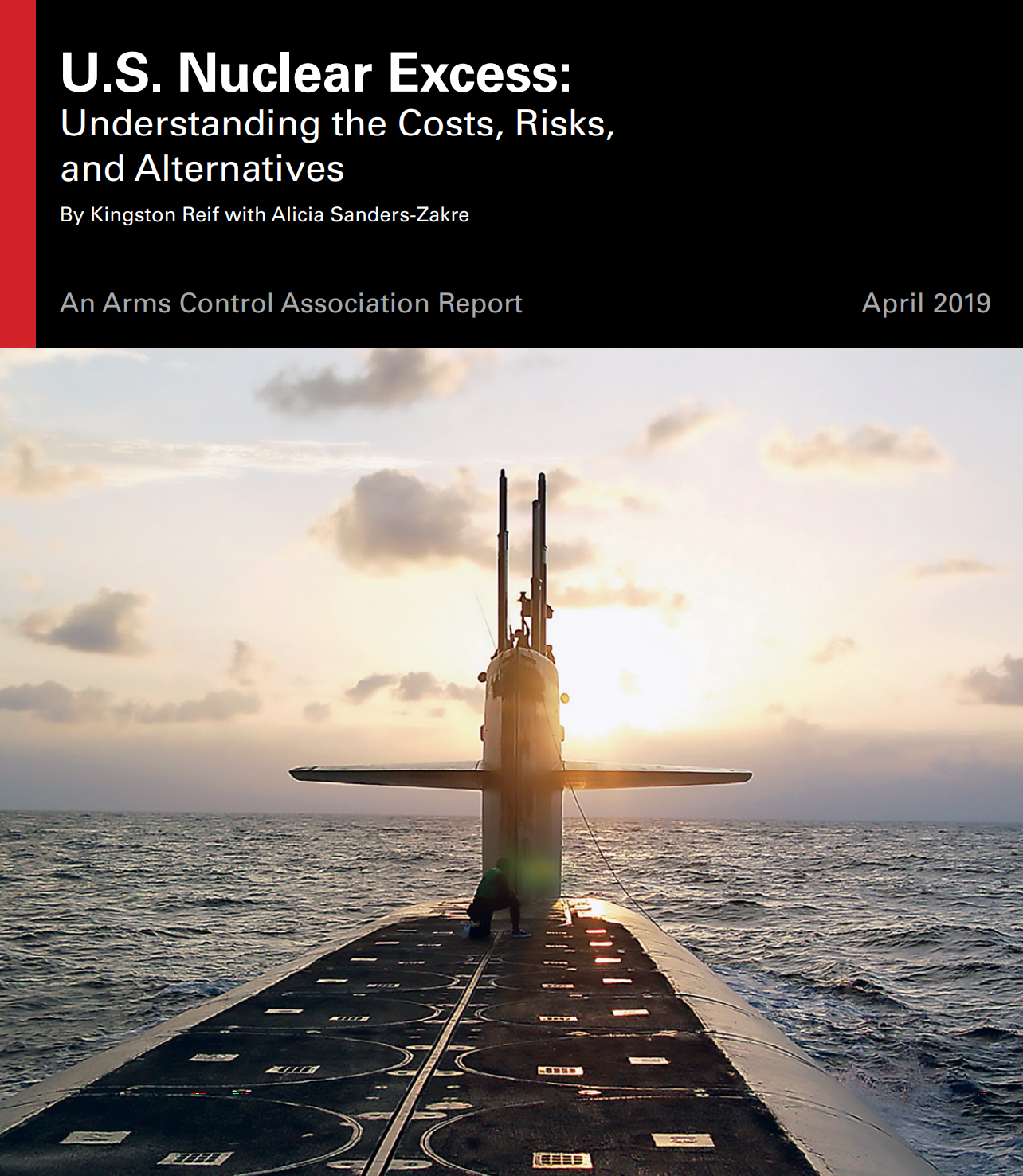 Despite characterizing during the Helsinki summit U.S. plans to replace the aging nuclear arsenal as “very, very bad policy,” the Trump administration is pursuing an excessive and unsustainable expansion of the role and capability of the U.S. nuclear arsenal to the tune of nearly $500 billion, after inflation, over the next decade. Over the next 30 years, the price tag is likely to top $1.5 trillion and could even approach $2 trillion.
Despite characterizing during the Helsinki summit U.S. plans to replace the aging nuclear arsenal as “very, very bad policy,” the Trump administration is pursuing an excessive and unsustainable expansion of the role and capability of the U.S. nuclear arsenal to the tune of nearly $500 billion, after inflation, over the next decade. Over the next 30 years, the price tag is likely to top $1.5 trillion and could even approach $2 trillion.
As our newly published report documents, it doesn’t have to be this way. U.S. Nuclear Excess: Understanding the Costs, Risks and Alternatives describes three realistic options to reduce spending on nuclear weapons and recommends steps Congress can take to adjust the programs to deal with the long-term budget challenges.
A companion website will be launched this summer, will provide regular updates on cost estimates and key decisions. The report and website were made possible with support from a project grant from the Charles Koch Foundation.
Hard duty in the Chernobyl zone
Cathie Sullivan, a New Mexico activist, worked with Chernobyl liquidator, Natalia Manzurova, during three trips to the former Soviet Union in the early 2000s. Natalia was one of 750,000 Soviet citizens sent to deal with the Chernobyl catastrophe. Natalia and Cathie together authored a short book, “Hard Duty, A woman’s experience at Chernobyl” describing Natalia’s harrowing four and a half years as a Chernobyl liquidator.
View an excerpt in this ARTICLE FROM beyondnuclearinternational.org
Feds stand by splitting ‘pit’ production between LANL, S.C.
“NNSA’s plans for expanded plutonium pit production is a house of cards waiting to fall down. First, we have an agency with a long track record of cost overruns and schedule slippages. Added to this is the lack of true mission need.
“Plutonium pit production is not being expanded to maintain stockpile safety and reliability. Instead it’s all about provocative new nuclear weapons designs that can’t be tested, or alternatively will push the U.S. back into testing with serious proliferation consequences.” – Nuclear Watch New Mexico director Jay Coghlan
BY MARK OSWALD | abqjournal.com
Lisa E. Gordon-HagertySANTA FE – Key federal agencies are standing by their plan split the work of producing the plutonium cores of nuclear weapons between Los Alamos National Laboratory and another site, a move that New Mexico’s congressional delegation continues to oppose.
But the Department of Defense and the National Nuclear Safety Administration were not unequivocal in describing the potential success of a two-site plan for making plutonium “pits.”
“Indeed, no option is without risk,” said NNSA administrator Lisa E. Gordon-Hagerty in a news release Wednesday.
The NNSA, which oversees the nation’s nuclear weapons labs, announced that a contractor has completed a study of options for pit production that was mandated by language added to a defense budget bill by New Mexico Sens. Tom Udall and Martin Heinrich.
The two senators want all pit production — and the federal dollars and jobs that come with it — to remain at LANL and say turning a facility at the Savannah River Site in South Carolina into a second pit-production post will make the undertaking much more expensive.
2020 Democratic Candidates on the Issue of Climate Change
The New York Times sent a climate policy survey to the 18 declared candidates. They all want to stick to the Paris Agreement. Beyond that, they diverge.
Senator Kirsten Gillibrand spoke at a rally for the Green New Deal at the Capitol last month.CreditCreditSarah Silbiger/The New York TimesBY LISA FRIEDMAN & MAGGIE ASTOR | nytimes.com
The nuclear option
The most divisive policy among the candidates was nuclear energy. Many climate change activists reject nuclear plants, even though they emit no carbon dioxide, because of safety concerns and a general preference for wind, solar and other purely renewable sources. And only seven candidates were unequivocally in favor of new nuclear energy development.
Mr. Sanders, who has called for a moratorium on nuclear power license renewals in the United States, rejected nuclear energy, as did Ms. Gabbard and Mr. Messam, the mayor of Miramar, Fla.
NNSA Downplays Study That Says Agency Can’t Make 50 Nuke Cores Per Year by 2030 in S.C.
A planned South Carolina facility will be able to produce 50 plutonium nuclear-weapon cores a year by 2030, despite a Department of Energy-funded study that says 2035 is more realistic, according to a top official with DOE’s National Nuclear Security Administration (NNSA).
BY DAN LEONE | exchangemonitor.com
“We have been working on scenarios to bring it back in time to ‘30,” Charles Verdon, NNSA deputy administrator for defense programs, told Nuclear Security & Deterrence Monitor Tuesday after a hearing of the House Armed Services strategic forces subcommittee.
In congressional testimony this year, NNSA Administrator Lisa-Gordon Hagerty has repeatedly mentioned the study — an engineering analysis completed by Parsons Government Services in 2018 — in the same breath as her appeals to lawmakers that the agency can only meet the Pentagon’s demand for 80 cores a year by 2030 by building the South Carolina facility while also producing cores in New Mexico.
– The full referenced Parson engineering analysis can be viewed here, & a summary here –
NNSA remains silent on meeting national Environmental Policy Act requirements for public environmental review.
![]() Recognizes the Inherent Challenges in Meeting Requirements for Plutonium Pit Production and Notes that the Current Approach is Achievable Given Sufficient Time, Resources, & Management Focus
Recognizes the Inherent Challenges in Meeting Requirements for Plutonium Pit Production and Notes that the Current Approach is Achievable Given Sufficient Time, Resources, & Management Focus
energy.gov | WASHINGTON – A study of the National Nuclear Security Administration’s (NNSA) recommended alternative to revitalize the United States’ plutonium pit production capabilities was delivered April 16 to Congress by the Department of Defense (DoD).
The Fiscal Year 2019 National Defense Authorization Act required the Secretary of Defense, in consultation with the NNSA Administrator, to contract a federally funded research and development center (FFRDC) to conduct an assessment of NNSA’s two-pronged approach to achieve DoD’s requirement for producing no fewer than 80 plutonium pits per year by 2030.
The Ploughshares Fund has released an official trailer for their new podcast, Press the Button! The podcast will cover the latest news, feature exclusive interviews and share insider, in-depth perspectives on all things nuclear. President of Ploughshares Fund Joe Cirincione will be the host, and you will also hear from many Ploughshares Fund voices like Program Director Michelle Dover, Deputy Policy Director Mary Kaszynski, Roger Hale Fellow Catherine Killough, Communications Director Delfin Vigil and more.
Press the Button will feature the smartest voices in nuclear and national security analyzing all the key issues. So, please take a listen. Our first full-length episode, with special guest Dr. Carol Cohn, will be dropping soon.
– Listen and subscribe on iTunes.
– Listen and subscribe on Spotify.
– Listen and subscribe on SoundCloud.
– Listen and subscribe on Google Play.
A NEW VISION 2019
The Ploughshares Fund has released a new report, “A New Vision: Gender. Justice. National Security.” These 10 essays from leading women in the field present a snapshot of what could be the start of a truly diverse, equitable and inclusive new vision for nuclear policy and national security.
This collection presents a snapshot of what could be the start of a truly diverse, equitable, inclusive and just new vision for nuclear policy and national security, direct from the minds of leading women in the field. We are grateful to the funding partners who made this report (pdf) possible.
US-Russia Chill Stirs Worry About Stumbling Into Conflict
The deep chill in U.S.-Russian relations is stirring concern in some quarters that Washington and Moscow are in danger of stumbling into an armed confrontation that, by mistake or miscalculation, could lead to nuclear war.
BY ROBERT BURNS | apnews.com
WASHINGTON (AP) — It has the makings of a new Cold War, or worse. American and European analysts and current and former U.S. military officers say the nuclear superpowers need to talk more. A foundational arms control agreement is being abandoned and the last major limitation on strategic nuclear weapons could go away in less than two years. Unlike during the Cold War, when generations lived under threat of a nuclear Armageddon, the two militaries are barely on speaking terms.
“During the Cold War, we understood each other’s signals. We talked,” says the top NATO commander in Europe, U.S. Army Gen. Curtis Scaparrotti, who is about to retire. “I’m concerned that we don’t know them as well today.”
Scaparrotti, in his role as Supreme Allied Commander Europe, has met only twice with Gen. Valery Gerasimov, the chief of the Russian general staff, but has spoken to him by phone a number of other times.
VAN HOLLEN LEADS LETTER URGING EXTENSION OF NEW START TREATY WITH RUSSIA
In the face of the Trump Administration abandoning international treaties and agreements, Nuclear Watch New Mexico applauds our senators Tom Udall and Martin Heinrich for signing this important letter defending nuclear arms control.
vanhollen.sentate.gov | Today U.S. Senator Chris Van Hollen led a letter with 23 Democratic Senators urging President Trump to extend the New Strategic Arms Reduction Treaty (New START) with Russia for another five years. This week marked the ninth anniversary of the signing of the treaty.
"Without inhibiting the ability of the United States to maintain a survivable, reliable, and effective nuclear deterrent, New START has advanced the security interests of the United States and underpinned strategic stability with a major nuclear-armed rival. By setting mutual limits on the numbers of deployed nuclear warheads and deployed and non-deployed strategic delivery vehicles, the treaty constrains the size and composition of Russia's nuclear capabilities and – through comprehensive monitoring and transparency measures – allows the United States to verify Russia's treaty compliance with confidence. New START is due to expire in February 2021 and can be extended for up to five additional years by agreement between the U.S. and Russian presidents," the Senators wrote.
They conclude, "Arms control is not an end in itself; it is a tool for containing the military capabilities of our adversaries and safeguarding the national security interests of the United States and its allies. Since 1972, Republican and Democratic administrations alike have pursued such measures as a complement to maintaining a robust nuclear deterrent. We urge you to sustain this bipartisan policy and advance U.S. security by extending New START for an additional five years."
The full text of the letter is available below and here.
"NukeWatch is very concerned over the possible termination of the JASONs. In 2004 NukeWatch asked then-Sen. Jeff Bingaman to require a JASONs study on the reliable lifetimes of plutonium pits, the cores of nuclear weapons. At the time the govt claimed pits were reliable for 45 years. The JASONs' conclusion that pits last 85 years or more had a profound effect, leading to congressional rejection of new nuclear weapons designs and related expanded pit production."
Storied Jason Science Advisory Group Loses Contract - Pentagon
BY JEFFREY MERVIS, ANN FINKBEINER | sciencemag.com
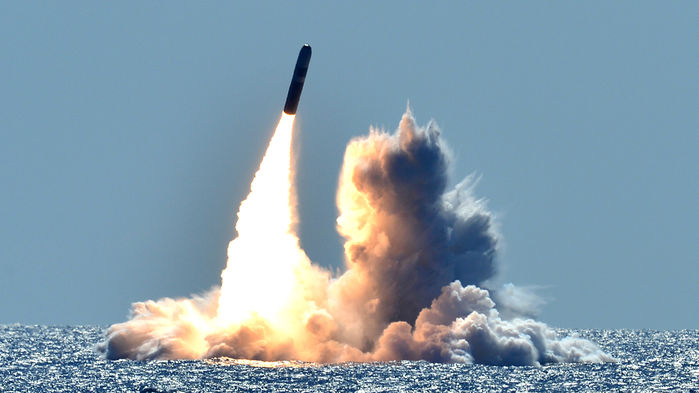
The U.S. Department of Defense (DOD) has severed its 60-year ties to a group of academics known as Jason, putting in jeopardy the group’s ability to conduct studies for the government on a range of national security issues.
Pentagon Pulls Funding for Team of Academics Who Work on the Most Difficult Scientific Problems
BY MATT NOVAC | gizmodo.com
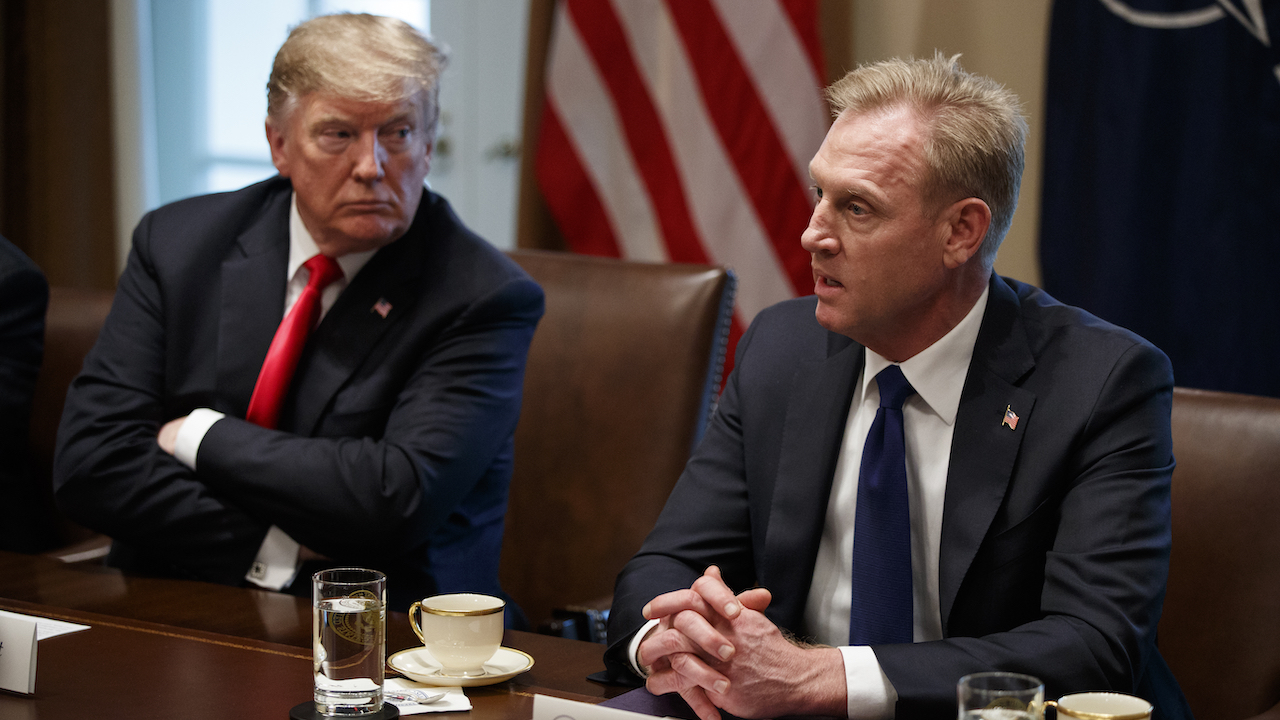
Photo: Associated Press
The U.S. Department of Defense under Patrick M. Shanahan has quietly pulled funding for an independent organization called the Jason Group under the Pentagon’s latest budget proposal. And it’s just one more way that the Trump regime is chipping away at independent scientific voices in the U.S. government.
The Jasons, as they’re sometimes called, are a team of academics who have historically tackled some of the most pressing scientific problems on behalf of the U.S. military. News that the Jason contract had been terminated was first revealed yesterday during a House budget meeting with members of the National Nuclear Security Administration (NNSA) and reported by Science magazine.
The Threat of Nuclear War Is Still With Us
The U.S. must re-engage with Russia to ensure the ultimate weapon doesn’t spread and is never used.
BY GEORGE P. SHULTZ, WILLIAM J. PERRY & SAM NUNN | wsj.com
The most difficult task facing the U.S. is also the most important—to refocus on America’s most vital interests even as we respond firmly to Russia’s aggressions.
New Mexico Is Divided Over The ‘Perfect Site’ To Store Nation’s Nuclear Waste
“There’s nobody that’s been able to demonstrate to me that there isn’t risk here,” says New Mexico Gov. Michelle Lujan Grisham. “There is risk. We need to be clear about that. I don’t think it’s the right decision for the state.”
BY NATHAN ROTT | npr.org
Thirty-five miles out of Carlsbad, in the pancake-flat desert of southeast New Mexico, there’s a patch of scrub-covered dirt that may offer a fix — albeit temporarily — to one of the nation’s most vexing and expensive environmental problems: What to do with our nuclear waste?
Despite more than 50 years of searching and billions of dollars spent, the federal government still hasn’t been able to identify a permanent repository for nuclear material. No state seems to want it.
The F-35 Fighter Jet Will Cost $1.5 Trillion. It’s Time for New Priorities.
BY WILLIAM R. PITT | TRUTHOUT.ORG April 11, 2019
U.S. taxpayers are no strangers to getting saddled with monstrously expensive weapons programs at the expense of basic needs like food, shelter and education. The Pentagon paid $44 billion for 21 very fragile B-2 stealth bombers, few of which still fly in combat roles. The F-22 fighter, coming in at more than $350 million per plane, was built to combat Cold War adversaries who ceased to exist six years before the first jet rolled off the production line. The sticker price for Ronald Reagan’s harebrained “Star Wars” missile defense program stands at around $60 billion.
Until we find a better way, we will continue to spiral ever downward to dissolution.
Federal Watchdog Probes Trump Admin Push for Saudi Nuke Deal
In 2017 Team Trump worked to clinch a nuclear deal with Saudi Arabia—and an independent investigative agency wants to know what happened behind closed doors.
BY ERIN BANCO | thedailybeast.com
One of the government’s top investigative agencies has looked at allegations of potential wrongdoing by individuals in the Trump administration about their planning of a nuclear deal with Saudi Arabia, according to two individuals with knowledge of the probe.
The line of inquiry is part of a broader investigation in the Office of the Special Counsel—an independent federal investigative and prosecutorial agency—into alleged politically motivated personnel decisions at government offices.
The OSC, which can seek corrective and disciplinary action, is looking at whether officials were retaliated against for raising concerns about the administration’s work related to a Saudi nuclear deal. As part of that investigation, OSC has also reviewed allegations about potentially improper dealings by senior members of the Trump administration in their attempt to map out a nuclear deal with Riyadh, according to two sources with knowledge of OSC’s work.
The details of the OSC probe, previously unreported, are the first indication that a government body other than Congress is investigating matters related to a potential nuclear deal between the U.S. and Saudi Arabia. OSC declined to comment on the record for this story.
The One Place in the US Google Earth Stopped Mapping
BY DRUV MEHROTRA & BRENDAN BYRNE | vice.com

Tonopah is a subsection of the Nellis Test and Training Range, which is jointly operated by the Department of Energy and Air Force. Since the early 1950s, the Nellis Range has been the site of extensive government aerospace and weapons testing.
The Nellis Complex contains the drone pilot HQ Creech Air Force Base, the site of extensive nuclear detonations formerly known as the Nevada Proving Grounds, and what is colloquially referred to as Area 51. The F-117A Nighthawk stealth fighter, experimental unpersoned aerial vehicles, and, most recently, the delivery vehicle of the much-thunkpieced B61-12, a “steerable,” variable yield nuclear bomb, have been tested there.
Original article: vice.com
A Nuclear Missile Gets Dismantled: Stop-motion Video
What goes up can be dismantled
BY RACHEL BECKER | theverge.com | Video by Smriti Keshari/Outrider Foundation
In a surprisingly cheerful stop-motion animation released today, two disembodied hands dismantle a model of a Minuteman III missile, a weapon that — if launched — could send a nuclear warhead across the world. The hands pull it apart, burn the fuel and explosives, and safely dispose of the nuclear warhead. “So now you know,” the narrator says. “We can do this.”
The video comes from the Outrider Foundation, the same educational nonprofit that created an uncomfortably beautiful blast simulator that lets you nuke your backyard. This time, the Outrider Foundation brings its design aesthetic to a less apocalyptic message about nuclear weapons: “They are built by humans. We know how to take them apart. We can make decisions about them that make our world safer,” says Tara Drozdenko, the Outrider Foundation’s managing director of nuclear policy and nonproliferation.
Nuclear power excluded from EU’s green investment label
The European Parliament voted on a proposed classification for sustainable assets on Thursday (28 March), voting to exclude nuclear power from receiving a green stamp of approval on financial markets.
BY CLAIRE STAM & ALICIA PRAGER | euractiv.com
The abandoned Satsop Nuclear power plant in the state of Washington, US. [sharkhats / Flickr]The text voted in Parliament also excludes fossil fuels and gas infrastructure from the EU’s proposed green finance taxonomy, which aims to divert investments away from polluting industries into clean technologies. In a bid to prevent “green-washing”, the Parliament text also requires investors to disclose whether their financial products have sustainability objectives, and if they do, whether the product is consistent with the EU’s green assets classification, or taxonomy.
Chernobyl’s disastrous cover-up is a warning for the next nuclear age
“Fallout from bomb tests carried out during the cold war scattered a volume of radioactive gases that dwarfed Chernobyl.The Chernobyl explosions issued 45m [million] curies of radioactive iodine into the atmosphere. Emissions from Soviet and US bomb tests amounted to 20bn [billion] curies of radioactive iodine, 500 times more.”
Ukrainians protest against the cover-up of the consequences of the Chernobyl accident, April 1990.Photograph: Игорь Костин/РИА Новости
BY KATE BROWN | theguardian.com
Before expanding nuclear power to combat climate change, we need answers to the global health effects of radioactivity.
In 1986, the Soviet minister of hydrometeorology, Yuri Izrael, had a regrettable decision to make. It was his job to track radioactivity blowing from the smoking Chernobyl reactor in the hours after the 26 April explosion and deal with it. Forty-eight hours after the accident, an assistant handed him a roughly drawn map. On it, an arrow shot north-east from the nuclear power plant, and broadened to become a river of air 10 miles wide that was surging across Belarus toward Russia. If the slow-moving mass of radioactive clouds reached Moscow, where a spring storm front was piling up, millions could be harmed. Izrael’s decision was easy. Make it rain.
Prospect of a nuclear war ‘higher than it has been in generations’, warns UN

“In a world defined by “competition over cooperation, and the acquisition of arms, prioritized over the pursuit of diplomacy”, the threat of a nuclear weapon being used is “higher than it has been in generations,” the Security Council heard on Tuesday.”
The warning came from Izumi Nakamitsu, the UN High Representative for Disarmament Affairs, in a meeting convened in support of the Non-Proliferation Treaty (NPT), ahead of the next conference to review the historic accord, scheduled for 2020.
The possible use of nuclear weapons is one of the greatest threats to international peace and security Izumi Nakamitsu, UN High Representative for Disarmament Affairs
The NPT, which entered into force in 1970, represents the only multilateral, binding commitment to the goal of disarmament by the States which officially stockpile nuclear weapons.
Budget compilation, PR, & more on DOE/NNSA nuclear weapons budget for FY 2020 at: https://t.co/nXsWLKtAAd
• Weapons up 11.8%, cleanup down 9.8%
• NNSA plans to cut "Nonproliferation & Arms Control" by 2/3's in FY 2021
•"Energy Efficiency and Renewable Energy" cut by 85.6%— Nuclear Watch NM (@NuclearWatchNM) April 2, 2019
Sens. Menendez and Rubio Question Energy Secretary over Approval of U.S.-Saudi Nuclear Cooperation
FOR IMMEDIATE RELEASE April 2, 2019
WASHINGTON – Senator Bob Menendez (D-N.J.), Ranking Member of the Senate Foreign Relations Committee, and Senator Marco Rubio (R-Fla.), today sent a letter to Secretary of Energy Rick Perry expressing their concern and asking for clarifications about the Administration’s approval of multiple licenses for U.S. companies to sell nuclear energy technology and support to Saudi Arabia. The United States does not have a framework pact for bilateral nuclear cooperation known as a “123 Agreement” with Saudi Arabia, yet the Department of Energy took the unusual step of authorizing the transfer of certain nuclear energy technologies and assistance to the Kingdom.
“The Kingdom frankly has engaged in many deeply troubling actions and statements that have provoked alarm in Congress and led lawmakers to begin the process of reevaluating the U.S.-Saudi relationship and our long-term stability and interests in the region,” wrote the senators. “We therefore believe the United States should not be providing nuclear technology or information to them at this time.
“We are very concerned about the nuclear proliferation risk associated with the Kingdom’s nuclear program, concluded the Senators before requesting Secretary Perry provide Congress with detailed information about his decision to authorize the nuclear technology transfer.
Animated info-graphic video on “What happens if make a huge pile from all 15,000 nuclear bombs and pull the trigger? And what happens if we make an even bigger pile?”
#NMED met with stakeholders today to discuss legacy contamination in New Mexico – this is what #collaboration looks like! pic.twitter.com/rfayv6Zld7
— New Mexico Environment Department (@NMEnvDep) April 2, 2019
Treaty’s End Would Give U.S., Russia Impetus to Make More Nukes: STUDY
“Neither country would have the same degree of confidence in its ability to assess the other’s precise warhead levels,” CNA’s Vince Manzo wrote in the study. “Worst-case planning is also more likely as a result.”
BY ARSHAD MOHAMMED & JONATHAN LANDAY | reuters.com
WASHINGTON (Reuters) — The demise of the only U.S.-Russia arms control pact limiting deployed nuclear weapons would make it harder for each to gauge the other’s intentions, giving both incentives to expand their arsenals, according to a study to be released on Monday.
The expiration of the New START accord also may undermine faith in the Nuclear Non-Proliferation Treaty, which calls on nuclear states such as the United States and Russia to work toward nuclear disarmament, as well as influence China’s nuclear posture, historically one of restraint.
HIGH-RISK SERIES: Substantial Efforts Needed to Achieve Greater Progress on High-Risk Areas
Regarding proper use of taxpayers’ money, DOE and NNSA have been on the Government Accountability Office’s High Risk List for project mismanagement for 27 consecutive years (begins page 217 in full report).
Nuclear News Archives – 2018
LANL to build part of next-gen nuclear weapons
“We’re trying to preach restraint to Iran, North Korea, the rest of the world,” says Coghlan, “and we’re going to go on to develop new-design nuclear weapons? That’s not practicing what we preach.”
MAY 11, 2018 | BY ROZ BROWN | nmpoliticalreport.com
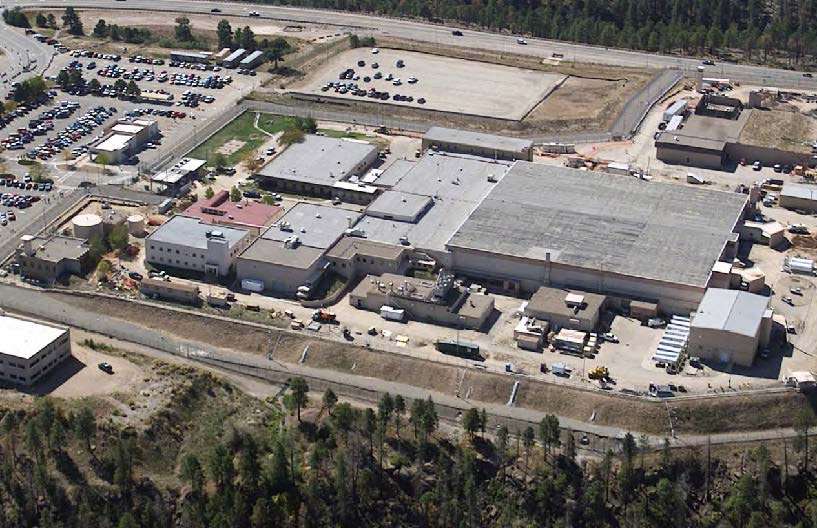
LOS  ALAMOS, N.M. – The National Nuclear Security Administration announced Thursday that New Mexico and South Carolina will share in the development of next generation nuclear weapons with expanded plutonium pit production.
ALAMOS, N.M. – The National Nuclear Security Administration announced Thursday that New Mexico and South Carolina will share in the development of next generation nuclear weapons with expanded plutonium pit production.
The “pit” is the core that triggers a nuclear warhead. The Trump administration wants to dramatically increase annual pit production, from 30 to 80. The NNSA says a troubled and not-yet-completed nuclear facility in South Carolina will be re-purposed to make 50 pits a year, while Los Alamos will make 30.
Nuclear watchdog groups are alarmed by the ramp-up. Jay Coghlan, director of Nuclear Watch New Mexico, insists the U.S. is setting a bad example.
NNSA: Plutonium Pit Production at Both Los Alamos and Savannah River Site
“To achieve DoD’s 80 pits per year requirement by 2030, NNSA’s recommended alternative repurposes the Mixed Oxide Fuel Fabrication Facility at the Savannah River Site in South Carolina to produce plutonium pits while also maximizing pit production activities at Los Alamos National Laboratory in New Mexico. This two-prong approach with at least 50 pits per year produced at Savannah River and at least 30 pits per year at Los Alamos is the best way to manage the cost, schedule, and risk of such a vital undertaking.”
-Joint Statement from Ellen M. Lord and Lisa E. Gordon-Hagerty on Recapitalization of Plutonium Pit Production
NB: Lisa Gordon-Hagerty is the Administrator of the NNSA (National Nuclear Security Administration); Ellen Lord is a DOD Under-secretary and Chair of the Nuclear Weapons Council (Gordon-Hagerty is also an NWC member).
Extraordinary: Koreas Pledge To Pursue Final Peace, Denuclearization
After a historic summit, North Korean leader Kim Jong Un and South Korean President Moon Jae-in have pledged to pursue “a nuclear-free Korean Peninsula” and to work towards “a permanent and solid peace regime.”
Growing Alarm Over Possibility of Nuclear War Between NATO and Russia
Read the recent articles linked below to get a feel for how alarmed some in the know are at this time. These concerns are not heard much on US mass media. You may find some alarmist, but the general drift is unmistakeable. And lets’ not forget that those who know, such as Former Defense Secretary William Perry, have been saying we are not alarmed enough, nowhere near enough. Perry: “The danger of a nuclear catastrophe is greater than during the Cold War. Our public is blissfully unaware.” (ref)
– Foreign Policy: On the Verge of Nuclear War
– Time: Mikhail Gorbachev: The U.S. and Russia Must Stop the Race to Nuclear War
– The Nation: Unproven Allegations Against Trump and Putin Are Risking Nuclear War
– Counterpunch: The Skripal Poisonings and the Ongoing Vilification of Putin
– Salon: Behind this week’s Russia headlines:
A mystery, a leap to conclusions and a fateful turn
How did we get to this point? Here’s some background:
– Andrew Lichterman: U.S.-Russia Nuclear Arms Racing: Still Crazy After All These Years
– Austin Long: Red Glare: The Origin and Implications of Russia’s ‘New’ Nuclear Weapons
Nuclear Fallout In US from Testing
USA Today reported on an unreleased federal study blaming fallout from worldwide nuclear bomb testing for at least 15,000 cancer-related deaths and more than 20,000 non-fatal cancers in U.S. residents born since 1951.
On the 7th Anniversary of Fukushima Disaster, It’s Still a Long Way From Over
7 years on, the decontamination process scheduled for March 2018 has been suspended due to “extremely high” radiation levels (one hour, you’re dead). (ref)
In Surprise Move, Trump Tweets He’ll Meet With Kim Jong Un by May
-
President Donald Trump agrees to meet with North Korean leader Kim Jong Un, a significant development in the decades-long effort to denuclearize the Korean Peninsula.
-
“Great progress being made but sanctions will remain until an agreement is reached,” Trump tweeted Thursday.
- Trump’s decision bypasses the traditional negotiation process in favor of a top-level face-to-face meeting.
The worrisome aspects of Trump’s Nuclear Posture Review represented the arguments of the “Second Nuclear Age” hawks, i.e. that the world is no longer bi-polar, that the US needs more small nukes widely deployed so as not to be caught with either no response or a strategic response in regional conflicts, where the adversary might doubt we would go strategic. Thus US ‘deterrence’ had weakened. In this view, numerous smaller, widely deployed nukes are meant to sustain ‘deterrence’ into the more chaotic “Second Nuclear Age”.
On the other hand, the Russian response is framed by their overriding anxiety that the US, with its missile defense systems surrounding Russia, and NATO troops on Russian borders, is intent on developing the ability to win a nuclear war with Russia. Russia is afraid of the destabilization of the Cold War strategic equilibrium model, wherein neither side sought an advantage so great that it might consider a surprise attack. ABMs – anti-ballistic missile systems- were banned so that neither side could hope to launch a first strike and take out the remaining retaliatory missiles with a missile defense system.
The Russian high command stated last year that they in fact did now think the US was working to develop this capability (ref). The Trump Nuclear Posture Review, with its emphasis on war-fighting nukes, only reinforced Russian command fears that the US could be preparing for a fight. The weapons systems Putin announced last week were all noted for their ability to defeat missile defenses and thus, in the Russian view, to preserve ‘MAD’- mutually assured destruction- the Cold War’s solution to preventing a nuclear war. To understand better the Russian view, it’s worth remembering what Yuri Andropov said in 1981:
“The US is preparing for war but it is not willing to start a war… They strive for military superiority in order to ‘check’ us and then declare ‘checkmate’ against us without starting a war.” (ref)
Putin’s speech to the Federal Assembly March 1, 2018:
“Back in 2001, the US announced its withdrawal from the Anti-Ballistic Missile Treaty. Russia was categorically against this. We saw the Soviet-US ABM Treaty signed in 1972 as the cornerstone of the international security system…
Together with the Strategic Arms Reduction Treaty, the ABM Treaty not only created an atmosphere of trust but also prevented either party from recklessly using nuclear weapons, which would have endangered humankind, because the limited number of ballistic missile defense systems made the potential aggressor vulnerable to a response strike.
We did our best to dissuade the Americans from withdrawing from the treaty. All in vain. The US pulled out of the treaty in 2002…
Despite our numerous protests and pleas, the American machine has been set into motion, the conveyer belt is moving forward. There are new missile defense systems installed in Alaska and California; as a result of NATO’s expansion to the east, two new missile defense areas were created in Western Europe: one has already been created in Romania, while the deployment of the system in Poland is now almost complete…”
Defeating missile defenses, from Putin’s speech to the Federal Assembly, March 1:
– The Sarmat ICBM “is untroubled by even the most advanced missile defense systems.”
– A nuclear-powered, nuclear-capable cruise missile: “invincible against all existing and prospective missile defense and counter-air defense systems.”
– A high-speed, deep ocean nuclear drone “There is simply nothing in the world capable of withstanding them.”
– The RS-26 “Avangard” (aka YU-71) A nuclear-capable hypersonic glide vehicle that can travel at 20 times the speed of sound. “It flies to its target like a meteorite, like a ball of fire”
The intersection of these two contrasting frames of reference could see misunderstandings, confusion, and conflict. Putin seemed to feel obliged to make a clear warning.
“We are greatly concerned by certain provisions of the revised Nuclear Posture Review, which… reduce the threshold for use of nuclear arms… in response to conventional arms attacks and even to a cyber-threat.”
As such, I see it as my duty to announce the following.
Any use of nuclear weapons against Russia or its allies, weapons of short, medium or any range at all, will be considered a nuclear attack on this country. Retaliation will be immediate, with all the attendant consequences.”
But he continued:
“There should be no doubt about this whatsoever. There is no need to create more threats to the world. Instead, let us sit down at the negotiating table and devise together a new and relevant system of international security and sustainable development for human civilization. We have been saying this all along. All these proposals are still valid. Russia is ready for this.
And in closing,
“I hope that everything that was said today would make any potential aggressor think twice, since unfriendly steps against Russia such as deploying missile defenses and bringing NATO infrastructure closer to the Russian border become ineffective in military terms and entail unjustified costs, making them useless for those promoting these initiatives.
It was our duty to inform our partners of what I said here today under the international commitments Russia had subscribed to. When the time comes, foreign and defense ministry experts will have many opportunities to discuss all these matters with them, if of course our partners so desire.”
Stephen Cohen: How Washington Provoked- and Perhaps Lost- a New Nuclear-Arms Race
WIPP Could Get $79M Budget Increase Under Trump’s DOE Funding Proposal
“The potential increase would mark a $79 million boost in WIPP’s funding compared with enacted spending in FY 2017, while several infrastructure projects are ongoing at the site to increase airflow and continue to expand the facility’s underground nuclear waste repository.”
Trump: On the US Nuclear Arsenal
“We’re modernizing and creating a brand new nuclear force. And frankly, we have to do it because others are doing it. If they stop, we’ll stop. But they’re not stopping. So, if they’re not gonna stop, we’re gonna be so far ahead of everybody else in nuclear like you’ve never seen before. And I hope they stop. And if they do, we’ll stop in two minutes. And frankly, I’d like to get rid of a lot of ’em. And if they want to do that, we’ll go along with them. We won’t lead the way, we’ll go along with them…
But we will always be number one in that category, certainly as long as I’m president. We’re going to be far, far in excess of anybody else.”
For more see Politico


